This past summer at Eurobike, Quarq announced their latest generation of power meters, the DZero lineup. The aim of this line was to refresh the existing offerings, while also somewhat simplifying things. Most visible to consumers though was the addition of Bluetooth Smart transmission, making for dual ANT+/Bluetooth Smart capabilities. Alongside that was an updated multi-color LED for status clarity. Behind the scenes, the company tweaked the strain gauge design to increase accuracy levels. Finally, the company also added support for Boost 148 and BB386 EVO bottom bracket compatibility. Phew.
I’ve been riding a DZero loaner unit that Quarq sent to try since December. Plenty of indoor and outdoor rides across all sorts of lovely winter (and now spring) conditions. In doing so, I’ve been recording boatloads of test data, with usually 2-3 other power meters on the bike at the same time. Like normal, I’ll be sending the unit back to Quarq once I’ve wrapped up the review.
With that – let’s dig into what’s in the box and then get it setup on the bike.
Unboxing:
The exact configuration of your Quarq DZero box will vary based on what exactly you ordered. In my case, the loaner unit I got came with chainrings pre-installed, minimizing the amount of work involved in setup. I like that…because I’m lazy. Though realistically installing chainrings is just a couple minute task at worst, it takes only a hex wrench.
As noted, my unit came with the chainrings pre-installed, but they also included some extra chainrings for craps and giggles. Further, they included a bottom bracket adapter, simply because the bike I was installing it on didn’t match the bottom bracket of the unit.
Otherwise, inside the box, you’ll find a small packet of papers that serves as a guide and warranty cards. And then, of course, you’ll find both the drive-side (with chainrings) and non-drive side crank arms situated.
And a closer look at the informational pieces of former trees:
If you take a peek at the piece of paper rubber-banded to your crank arm, it’ll show the test information from the factory calibration test pass. It’s actually pretty cool how that all works, and I showed it within my behind-the-scenes post at Quarq’s HQ last year or so.
Here’s how the two look when positioned all pretty:
And thus concludes our unboxing section. I love unboxing sections that have a mere two parts to the device. Note the coin cell battery is already pre-installed.
Installation/Configuration:
Like any power meter, getting the Quarq installed will vary depending on what your current bottom bracket setup is relative to whatever you bought from Quarq. If you were smart, you bought the same bottom bracket setup, and thus your installation is pretty quick and easy. If instead you elected to introduce unnecessary pain and confusion, then you bought some other standard and now need to also convert your bottom bracket. That, in turn, may be easy, or you could spend all day waiting for glue to dry.
In this case, I kept things relatively simple and thus the change was easy enough. Since I was using GXP previously, I merely needed to remove a few screws and pull out the existing crank set.
Then, I slid in the new crank set. Don’t forget to put the chain on the correct side of the axle, else, you’ll swear a bunch when you get to the end and realize you have to start over again. Don’t worry, I forget about 73% of the time.
Once done you’ll go ahead and screw on the non-drive crank arm on the other side and then attach your pedals. Don’t forget spacers if your pedals require them.
Of course, just like bottom bracket changes can vary, so can how you buy the Quarq when it comes to chainrings. If you bought just the power meter spider, then you’ll need to install the chainrings (those are the spikey things that you can use like a Frisbee if fending off a knife attack). Whereas if you buy the whole kit with them pre-installed, then you’ll save yourself 5-15 minutes of time. It’s super easy to install chainrings though.
Once everything is set, toss your bike on a trainer and do a few brief (like 5-20 second) hard efforts to ensure that:
A) The front doesn’t fall off, and…
B) It doesn’t sound like anyone is dying down there.
If both things check out, then we can move onto doing a zero offset. Which I might as well cover in the ‘general use’ section. Beyond that, we’re done here.
General Use Overview:
As has been the case for about a decade, using a Quarq power meter is pretty darn simple. You can more or less set it and forget it. Yet there remains a fair about of tweaking that can occur behind the scenes with their apps, for advanced users that want it. In fact, I’d argue no power meter has as much tweakable potential. On the flip side…it’s generally best not to tweak things unless you really truly know what you’re doing.
First though, let’s start with the basics. And no better place to begin than the battery compartment. The unit hosts a CR2032 battery, like many ANT+ sensors these days. Quarq states a battery life of about 200 hours, though I haven’t ridden enough hours yet on it to find the end of that tunnel. Generally speaking, their battery life estimates are pretty solid. Not to mention that Quarq says that realistically folks can probably get up to 300 hours in the right conditions, but that they went with a more conservative 200 hours for those that might be riding in battery-challenging conditions like the Arctic Circle in December.
The battery compartment can be found right on the front, easily unscrewed and accessed without any tools. Long-time Quarq users (and Quarq themselves) know that much older generations of Quarq units (i.e. those before around 2012 or so) had a bunch of challenges with battery caps and water ingest. But since then things have been pleasantly quiet.
The battery is found under that little ‘Q’ cap-looking thing:
We’ll move onto connectivity, for which the DZero supports both ANT+ and Bluetooth Smart. This means you can use any head unit that supports ANT+ power meters like a Garmin or Wahoo device, as well as those from Polar and Suunto that support Bluetooth Smart power meters. I’ve tested it across virtually all Garmin devices made in the last few years (via ANT+), as well as via Bluetooth Smart on the Garmin Fenix 5 and FR935, Polar M460, Wahoo Bolt, and even Zwift iOS. No issues.
When it comes to the data types the DZero supports, it will depend on which protocol you use:
ANT+ Power (total)
ANT+ Power Balance (estimated)
ANT+ Cadence
Bluetooth Smart Power
Bluetooth Smart Power Balance (estimated)
Bluetooth Smart Cadence
Since the unit isn’t a separated left/right power meter (i.e. like a PowerTap P1 or 4iiii Precision), it tends to handle 3rd party compatibility over Bluetooth Smart better than those that are dual systems on Bluetooth Smart. On ANT+ there are no issues at all with either type. Pro Tip: If reading this review some time down the road and you want to validate compatibility with your specific head unit over Bluetooth Smart, double-check the comments section below. Many folks will chime in to confirm operation. For example, you can see the Polar M460 connecting to the Quarq DZero below:
As for the metrics noted above, you can see this detail on the head unit itself of course, or afterwards on various platforms depending on the capabilities of the platform. For example using the baseline of Garmin Connect, here’s what you’ve got for a ride. Whereas if you pair to Suunto’s platform you won’t get some of the additional power meter metrics beyond baseline power, since Suunto doesn’t support those. Meanwhile, Polar sits somewhere in the middle on support of advanced metrics.
When it comes to pairing your head unit, it’ll show either an ANT+ ID or Bluetooth Smart name. In the case of ANT+, for example, the ANT+ ID is actually the last five digits as listed on the power meter itself (seen below). Whereas in Bluetooth Smart it’ll list Quarq DZERO in the results, as well as a unique Bluetooth ID (like seen above in the Polar M460).
Most head units support re-naming the sensor ID to something more friendly so you can remember/find it later. In the case below I’ve renamed it to simply ‘Quarq’.
One of the most important things to do is regularly check your zero offset, which is a form of calibration. Technically there are more detailed calibration levels, but for 98% of consumers out there, the zero offset is as close as they’ll get. This allows you to monitor a given value and see if there are major changes to it. Generally speaking, that number will shift slightly with temperature, but in rare cases it can also change dramatically if something has gone wrong with the unit.
In the case of Quarq, there is no ‘right’ number, but rather you’re looking to see minor shifts each time (a few digits) at most. If you see a major shift and you haven’t moved your bike to Antarctica, then I’d ring up Quarq service.
With a Quarq DZero unit the company does their 10K temperature compensation for each unit that leaves the factory, which means they record how the unit responds to a massive temperature range, ensuring higher levels of accuracy at any cycleable temperature level. I detail how that works in my behind the scenes post at their factory.
Still, I find it a good practice to do a zero offset (which is technically what you’re doing) before I start each ride after taking the bike outdoors. Or indoors too. This just lets me mentally validate all is happy. To do so on the Quarq you’ll simply remove your feet from the pedals and then use your head unit to perform a ‘calibrate’ or ‘zero offset’ (wording will vary based on head unit).
It’ll come back with the aforementioned value a few seconds later.
One can also do the same on the mobile app too if you’d like. Which makes for a perfect time to talk about said app.
With Bluetooth Smart being added to the platform, it means the company has tweaked their Qalvin app to connect over Bluetooth Smart (BLE) for configuration tweaks to the DZero. This is where you can also update firmware. The DZero app is free on iOS and Android.
Within the app you can check status of the power meter, as well as tweak some settings and calibration related parameters. It’s both silly easy to use and fairly powerful. And of course, you can update the firmware too.
With that, we’ve covered pretty much all you need to know about using the unit. So, let’s shift into whether or not the thing is accurate. In many ways, that’s more important than above anything in this section.
Power Meter Accuracy Results:
I’ve long said that if your power meter isn’t accurate, then there’s no point in spending money on one. Strava can give you estimated power that’s ‘close enough’ for free, so if you’re gonna spend money on something it shouldn’t be a random number generator. Yet there are certain scenarios/products where a power meter may be less accurate than others, or perhaps it’s got known edge cases that don’t work. Neither product type is bad – but you just need to know what those use/edge cases are and whether it fits your budget or requirements.
As always, I set out to find that out. In power meters today one of the biggest challenges is outdoor conditions. Generally speaking, indoor conditions are pretty easy to handle, but I still start there nonetheless. It allows me to dig into areas like low and high cadence, as well as just how clean numbers are at steady-state power outputs. Whereas outdoors allows me to look into water ingest concerns, temperature and humidity variations, and the all important road surface aspects (i.e. vibrations).
In my testing, I generally use between 2-4 other power meters on the bike at once. I find this is the best way to validate power meters in real-world conditions. In the case of most of these tests I was using the following other units concurrently:
PowerTap G3 hub based power meter
PowerTap P1 pedals based power meter
Stages Gen2 left-only unit
Tacx NEO Trainer
Wahoo KICKR2 Trainer
In general, my use of other products is most often tied to other things I’m testing. Also, when it comes to data collection I use a blend of the NPE WASP data collection devices, a fleet of Garmin head units (mostly Edge 520/820/1000 units) and some Wahoo ELEMNT BOLT units.
Note, all of the data can be found in the links next to each review. Also, at the end is a short table with the data used in this review. I’ll likely add in other data not in this review over time as usual.
With that, let’s get started on an indoor trainer ride, which is always a great place to start. In this case it was a ride where the Tacx Neo trainer was controlled via FE-C from a head unit. I was simply setting specific wattage values via the head unit. This is a great and simple test to ensure that there isn’t any obvious drift between the products over time. Here’s the Analyzer link that these graphs come from for that ride.
(Above the data is smoothed at 5s, and the purple lines you see earlier on were some sort of ANT+ dropout on the P1 units. I moved the head unit and it resolved it.)
Above you can see that up until the 36-minute marker the three units stay fairly darn close. Within a few watts in most cases, with the Tacx Neo generally being the lowest (as it should be considering drivetrain loses), and the P1 and DZero units blended together.
One odd area though is between the 35 and 43-minute markers, when I increase the cadence slightly to about 115rpm (which isn’t all that high in the grand scheme of things). All three units ‘separate’ and report different values. Unfortunately, this is one of those rare scenarios where I can’t establish a clear ‘winner’ in this case, since none are the same.
After that high cadence section all three units merge back together again, so it definitely is a bit peculiar, and not something I saw in subsequent tests. It’s plausible given this is older data that it was on the earlier firmware version, but I’m pretty sure I updated firmware back in the early February timeframe.
Let’s shift then to another indoor trainer ride, this time on Zwift. Zwift is interesting for the variability within power, and the fact that it forces numerous units to react more quickly than a simple ERG mode. Here’s that workout file.
In the above charts, the power data is smoothed at 5s to make it easier to see. Overall you can see things match quite nicely. Even those sprints which close in on 700w+ match up very well. And keep in mind that’s actually higher than that, because of the smoothing factor.
If I zoom in on the lesser sprint at 33 minutes, you can see all three units react rather beautifully:
I would have expected the P1 and DZero to be a bit closer here, though not much. If you use a +/-2% accuracy range, that means you’re looking at each one having a swing of +/- 12w on 600w. So a total swing potential of 24w on 600w between the two units – and we’re within that envelope (and especially once we include slight differences in measurement locations).
And again the same at the 13-minute marker with all being inside the accuracy envelope.
Even if reduce the smoothing to 2s we can see all three units match quite well on that final sprint. Keep in mind that, due to slight differences in the way different types of power meters transmits and head units record data, it’s virtually impossible to get the same 1-second value for max power between units (plus, they vary in recording location anyway).
That said, spitting out a mean-max graph for these, you’ll see that even the upper peak 1-second max recorded value is pretty close. The remainder of the units track evenly across the entire duration, albeit at perhaps a few watts more separation than I’d like. Nothing out of spec, but ideally they would have been just a couple of watts closer.
Finally, let’s shift gears and head outside. It’s more fun out there anyway. This nearly three hour ride covers plenty of terrain, including cobbles and other rough roads. Plus of course nice smooth roads as well as plenty of stop and go moments. As you can see, it’s a bit of a mess to look at from the three-hour view:
Though what’s important here is that there’s almost no separation between the three units.
So let’s zoom in on a few sections to dive into in more detail. First I’m going to pick a section which is largely steady-state at about the 1hr marker:
The data above in this little 7 or so minute section is rather clean. All three units track quite nicely, and the ‘ordering’ is correct with the PowerTap G3 hub being the lowest, then the Quarq DZero, and finally the PowerTap P1 being highest. Despite some solid 500w surges (the above data is smoothed at 10 seconds), it still looks pretty. Below, I put the smoothing at 3s and the numbers are still very close:
Picking out another point, here’s a 900w sprint, at 0-seconds of smoothing. Again remember that you’ll virtually never see a perfect match in these max effort type scenarios. Interestingly, you can see the slight oddity in the PowerTap G3 hub for about 1-2 seconds at the base where I briefly slowed my cadence. The G3 misses that (it often does) whereas the Quarq and P1 pick that up.
Speaking of cadence, as many know, Quarq shifted from a magnet-based requirement a few years back and has been since allowing you to run magnet free. In digging through a fair bit of data I’m not seeing any issues here either with respect to cadence variability. Here’s a random snippet of cadence out on the road.
Last but not least, to wrap things up we’ve got a mean-max chart for the three hour ride:
The units are pretty much glued together throughout the ride, minus a very slight bit of difference at the peak 1-minute to 2-minute power. Though, it’s pretty minor differences with mostly the G3 hub that differs there (and is within accuracy range spec).
Overall I don’t see anything of concern here. While Quarq did have an issue back in early January impacting accuracy for some people in certain high-wattage sprint situations, that isn’t something I saw with the firmware update released in late January intended to address it. It’s also possible my paltry sub-1000w efforts simply couldn’t trigger said bug (that again, they and other users have said has been resolved). For everything else, the power numbers and accuracy figures I see are in-line with other units that are generally known to be trusted and respected within the industry.
Finally, here’s a table of all of the comparative data that I’ve used in this review, along with others I didn’t show in this review. Further, there are additional days where I just didn’t capture 2-3 other power meters concurrently, but may only capture one additional power meter. So I didn’t include those in here.
Quarq DZero Power Comparison Data
| Workout Date | DCR Analyzer Link | Products Used In Test |
|---|---|---|
| March 30th | Analyze | Quarq DZero, PowerTap P1 Pedals, Stages Gen2, Tacx Neo, Xert |
| March 26th | Analyze | Quarq DZero, PowerTap P1 Pedals, PowerTap G3 Hub |
| March 24th | Analyze | Quarq DZero, PowerTap P1 Pedals, Tacx Neo, Zwift |
| March 5th | Analyze | Quarq DZero, PowerTap P1 Pedals, Tacx Neo, Xert |
| Feb 17th | Analyze | Quarq DZero, PowerTap P1 Pedals, Tacx Neo, FE-C Manual Control |
| Feb 6th | Analyze | Quarq DZero, PowerTap P1 Pedals, Tacx Neo, Zwift |
| Dec 28th | Analyze | Quarq DZero, PowerTap P1 Pedals, Kinetic SmartControl, Kinetic Fit App |
You can click on any of the links above and also select to ‘Download Set’, which lets you download all of the original .FIT files from the various devices used to record the data.
(Note: All of the charts in these accuracy sections were created using the DCR Analyzer tool. It allows you to compare power meters/trainers, heart rate, cadence, speed/pace, GPS tracks and plenty more. You can use it as well, more details here.)
Power Meter Recommendations:
With so many power meters on the market, your choices have expanded greatly in the last few years. So great in fact that I’ve written up an entire post dedicated to power meter selection: The Annual Power Meters Buyer’s Guide.
The above-noted guide covers every model of power meter on the market (and upcoming) and gives you recommendations for whether a given unit is appropriate for you. There is no ‘best’ power meter. There’s simply the most appropriate power meter for your situation. If you have only one type of bike I’d recommend one power meter versus another. Or if you have different needs for swapping bikes I’d recommend one unit versus another. Or if you have a specific budget or crankset compatibility, it’d influence the answers.
Now since the guide came out this past fall, there really hasn’t been any major entrants in the market that weren’t already covered in that post. However, there have been two noteworthy reviews since, plus one coming up shortly:
A) 4iiii Precision Dual Review: The post in my annual power meter guide didn’t cover the accuracy aspects of the newer left/right setup, so I didn’t dive into general recommendations. But as you saw in my Precision in-depth review a month or two ago, that’s solid. No issues recommending it, works well.
B) WatTeam Gen2 Dual: You also saw in that review a month or so ago, and it was mostly pretty good. The WatTeam re-introduced their $499USD dual left/right power meter this past winter. There were two quirks that I saw though, so you’ll want to check out that review to see if those impact you.
C) ROTOR 2INPower: This is their dual left/right setup that they announced last year and started shipping in the fall-ish. I’ve completed all data gathering on it, and all photos on it. Early glance at the data shows it looking very good, but I haven’t dug into all the files yet. Either way, review up next week!
But again – check out the power meter recommendations guide here. I typically do this in September, and I didn’t see any notable power meter announcements at Sea Otter last week (where we sometimes see power meters announced), thus I’ll likely hold off on doing another annual summary until September as well. Especially since the word ‘annual’ implies once a year. ;)
Summary:
It’s probably not much of a surprise that Quarq would deliver a solid unit, that’s generally what they’re known for. Still, it’s important to validate that assumption and ensure it holds true. And in the case of the newly added Bluetooth Smart compatibility, it’s important to ensure it works on leading units out there via Bluetooth Smart. I’ve checked it on the Wahoo BOLT, Polar M460, and Fenix 5 (via Bluetooth Smart). Plus, of course, boatloads of others via ANT+ without issue.
For those power users (in the data geekiness way), the extra validation and config options that Quarq offers via their smartphone app will likely continue to be appreciated. After all, they were the first one to introduce those options many years ago. At the time it enabled bike shops and others to quickly validate configurations and settings. These days it allows consumers to validate those same settings and check for firmware easily.
I’d have zero issues recommending the DZero to anyone, it just works, and works dependably every time with virtually no fiddling.
Found This Post Useful? Support The Site!
Hopefully you found this review/post useful. At the end of the day, I’m an athlete just like you looking for the most detail possible on a new purchase – so my review is written from the standpoint of how I used the device. The reviews generally take a lot of hours to put together, so it’s a fair bit of work (and labor of love). As you probably noticed by looking below, I also take time to answer all the questions posted in the comments – and there’s quite a bit of detail in there as well.
If you're shopping for the Quarq DZero or any other accessory items, please consider using the affiliate links below! As an Amazon Associate I earn from qualifying purchases. It doesn’t cost you anything extra, but your purchases help support this website a lot.
Here's a few other variants or sibling products that are worth considering:
And of course – you can always sign-up to be a DCR Supporter! That gets you an ad-free DCR, access to the DCR Quarantine Corner video series packed with behind the scenes tidbits...and it also makes you awesome. And being awesome is what it’s all about!
Thanks for reading! And as always, feel free to post comments or questions in the comments section below, I’ll be happy to try and answer them as quickly as possible. And lastly, if you felt this review was useful – I always appreciate feedback in the comments below. Thanks!



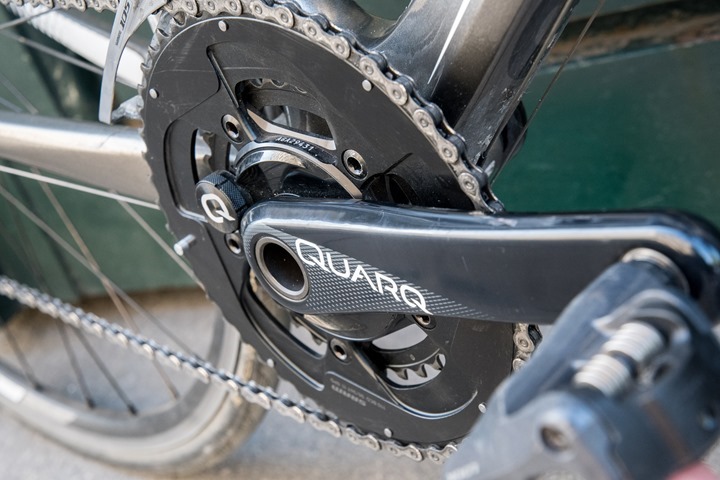

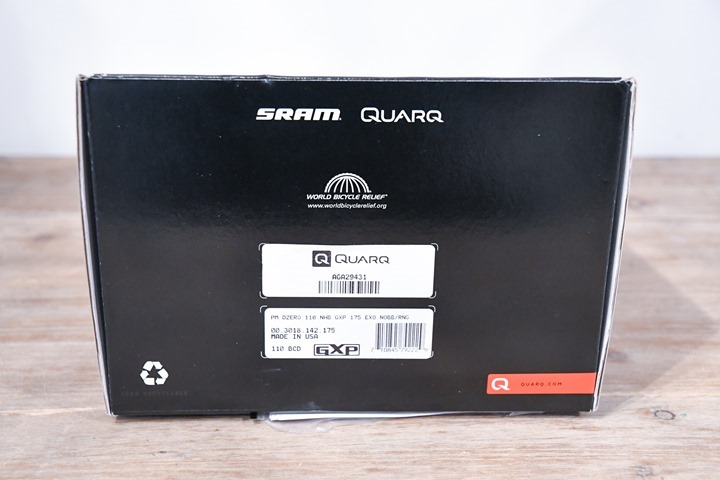
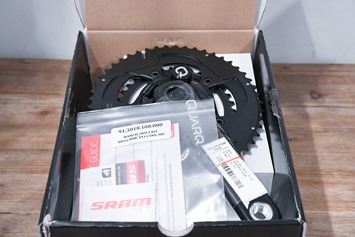
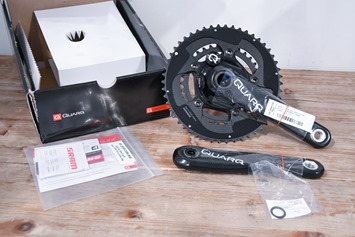
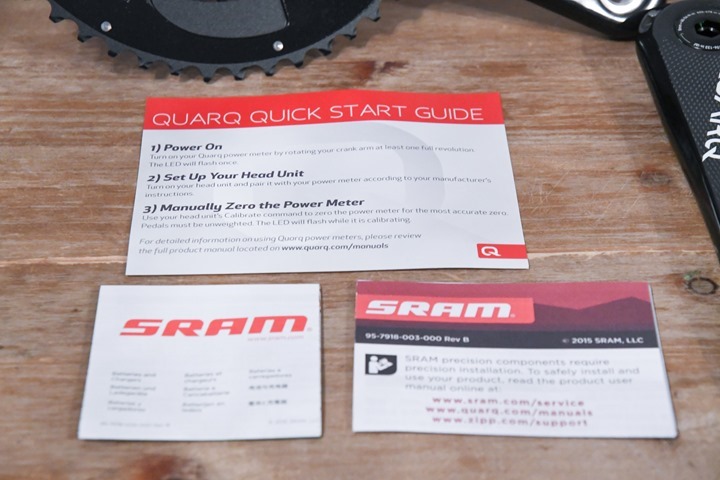
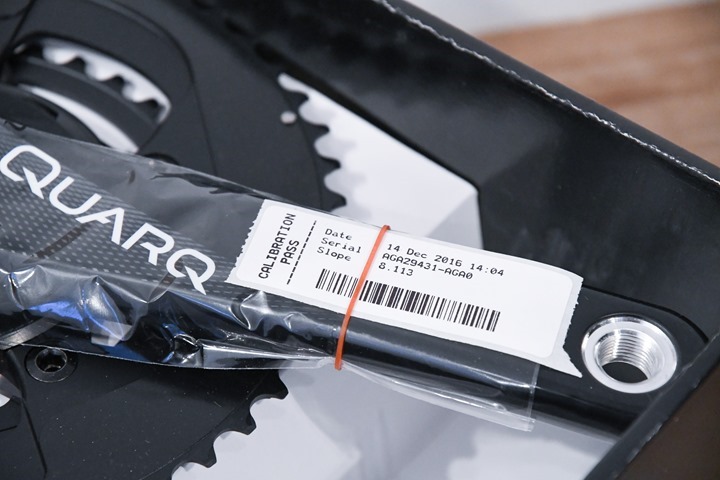
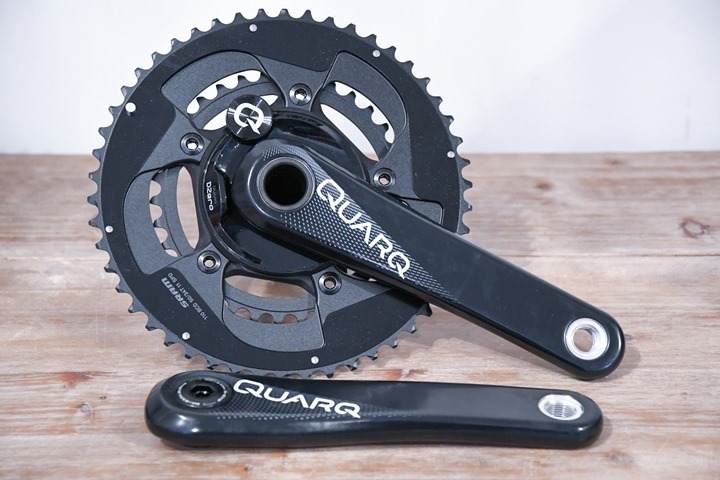
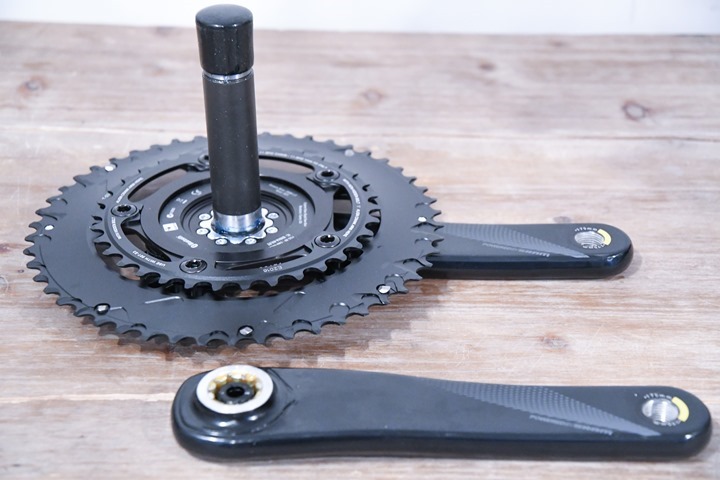
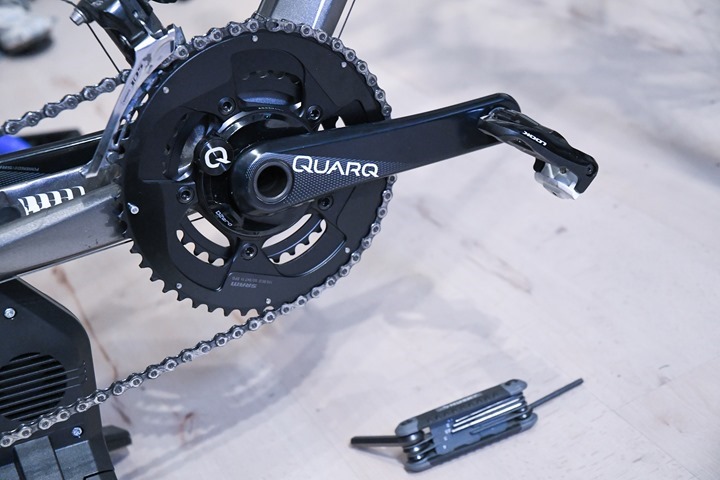
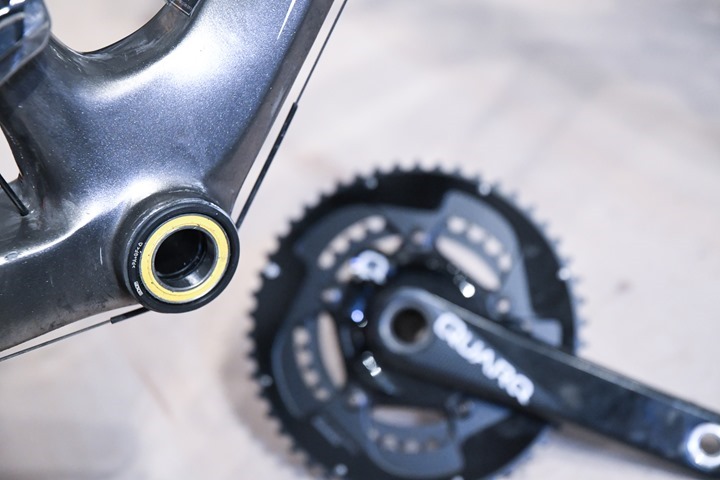
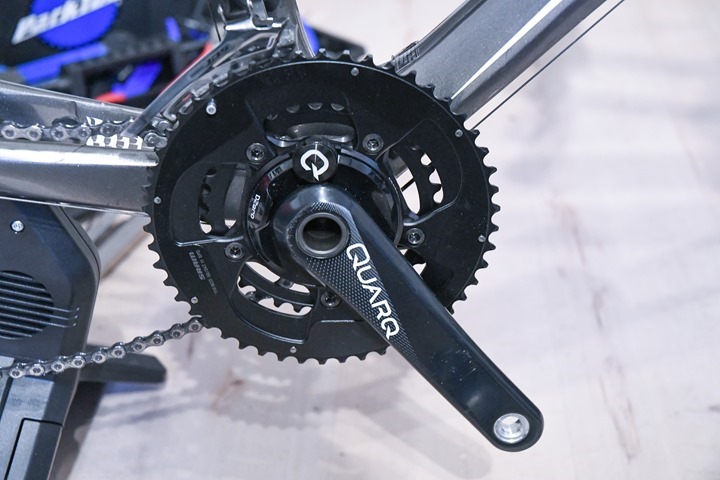
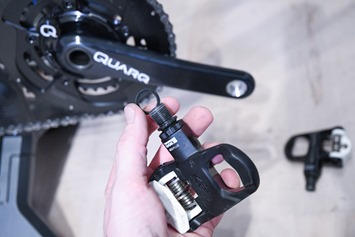
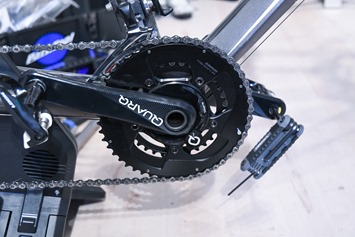
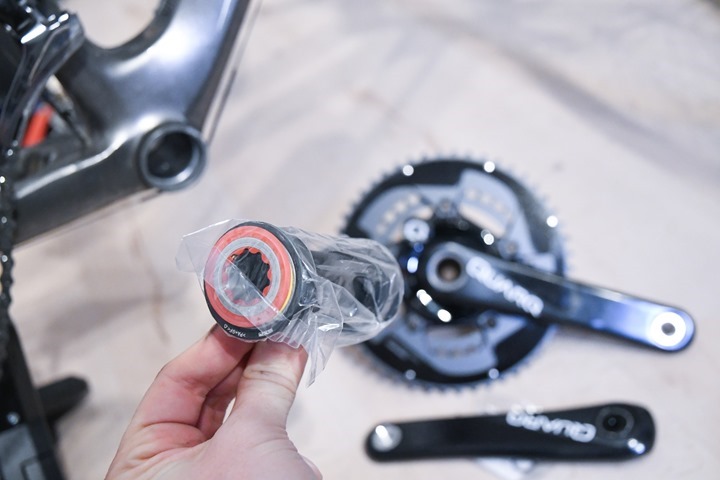
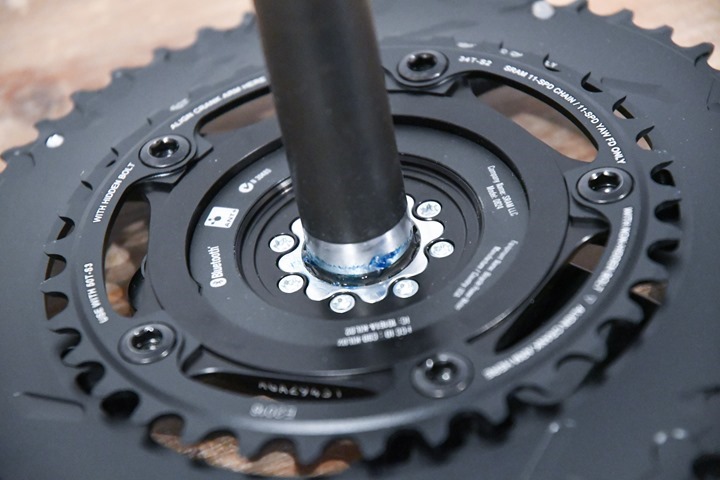
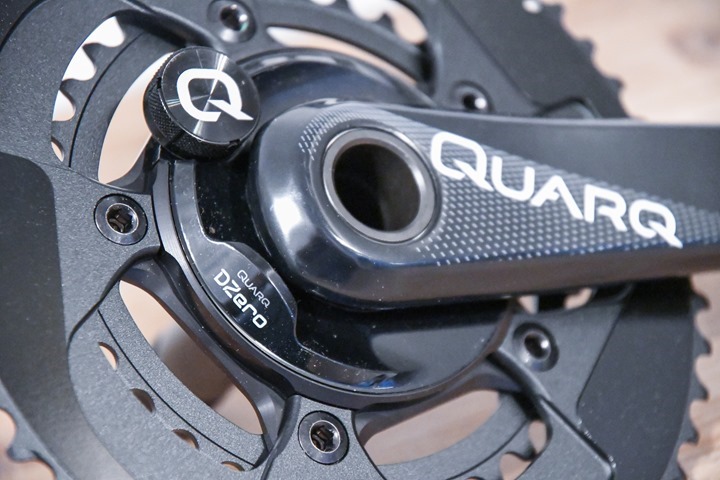

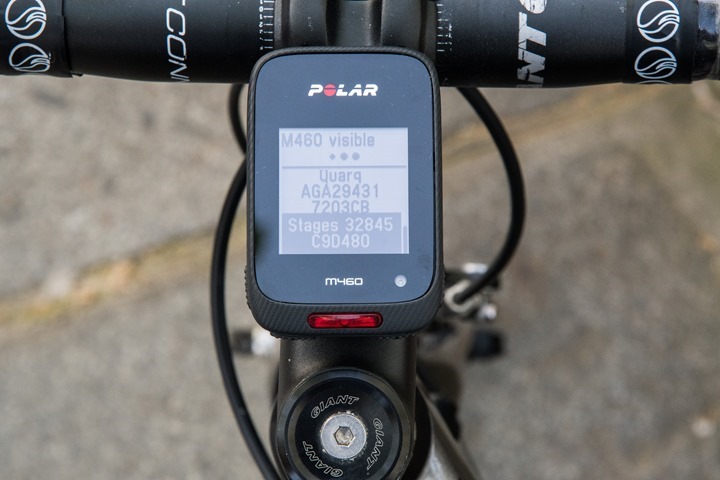
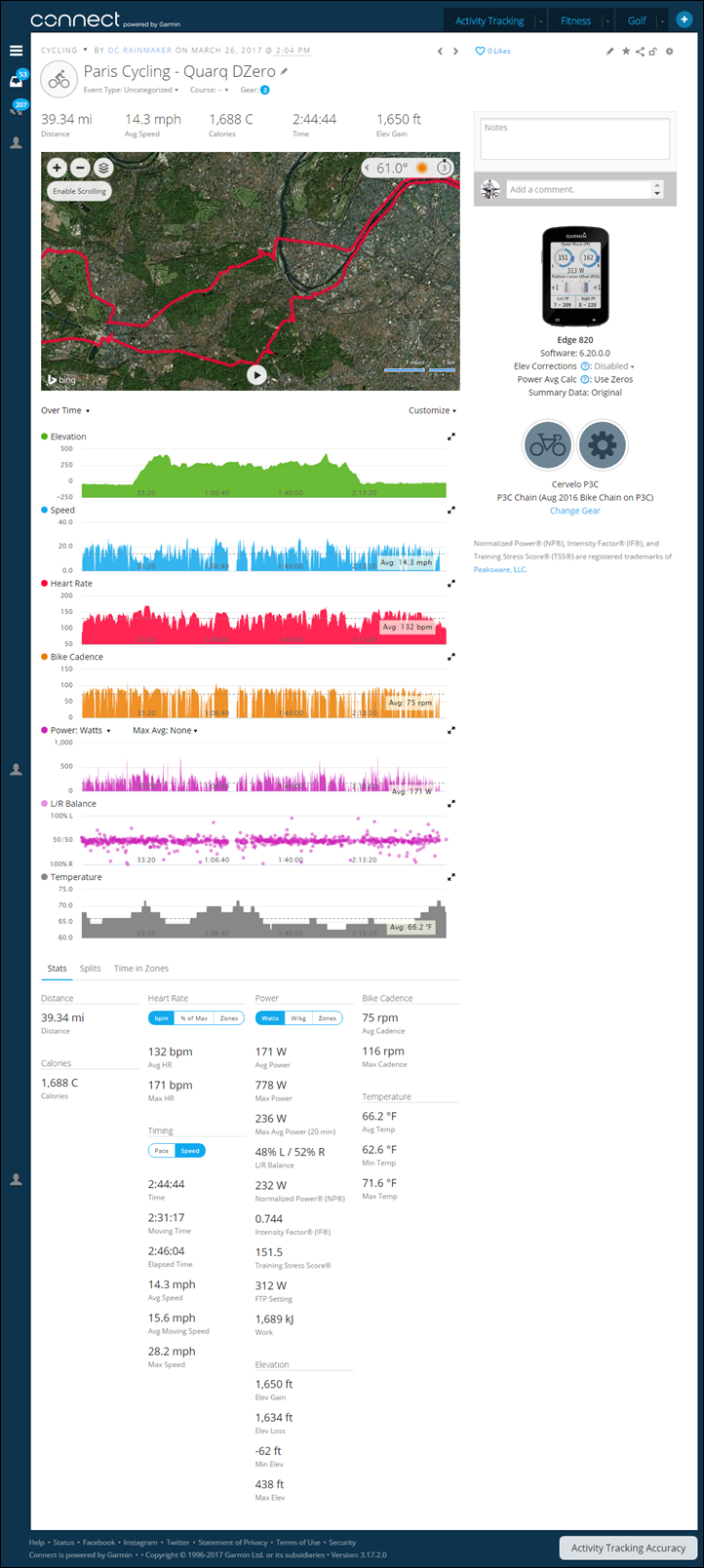
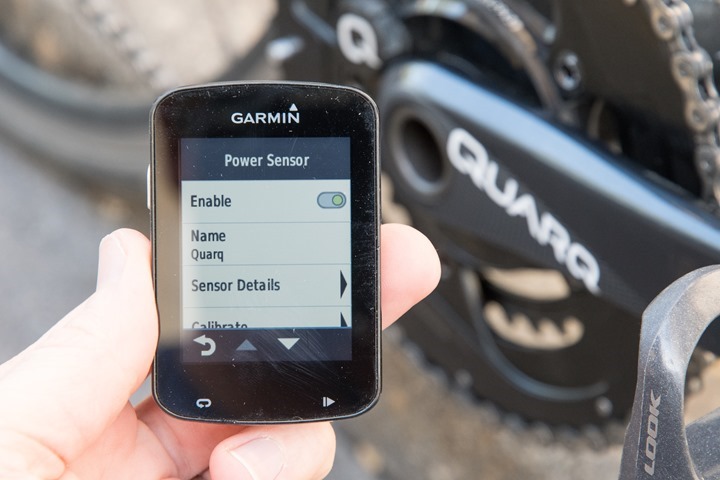
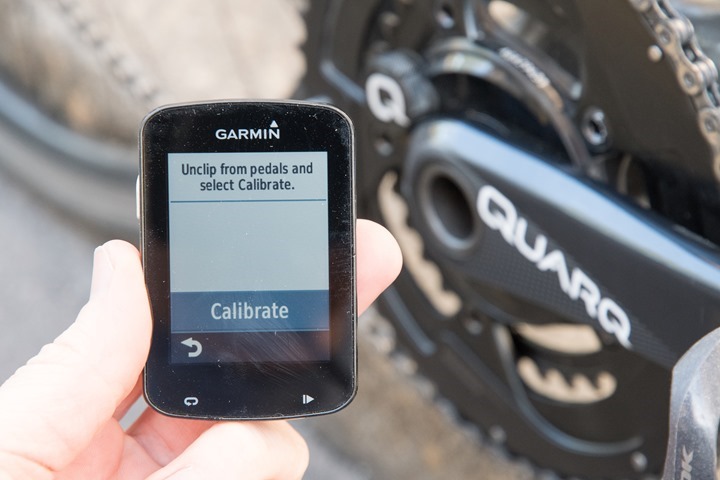
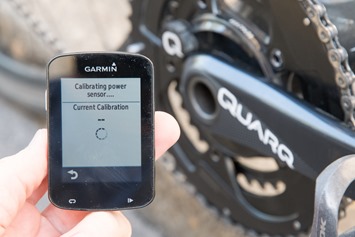
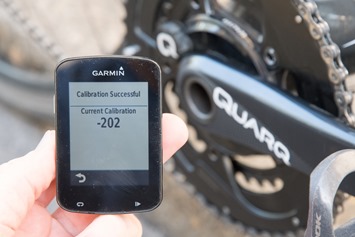

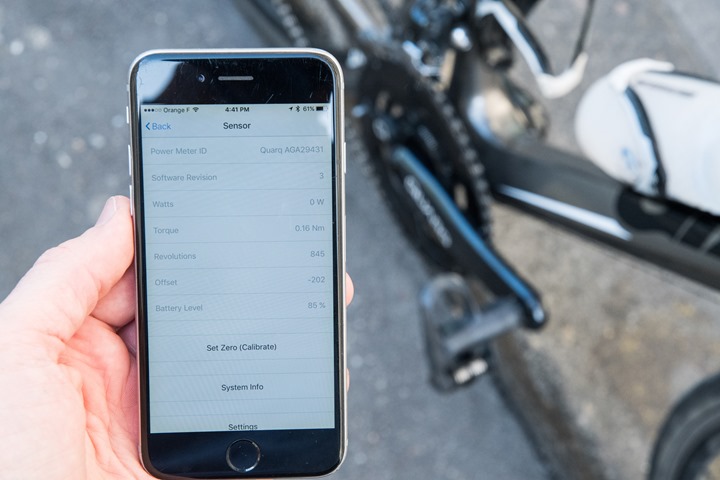

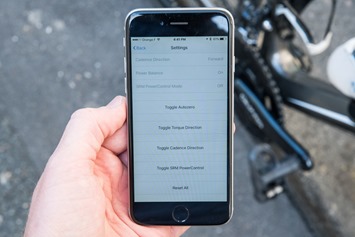













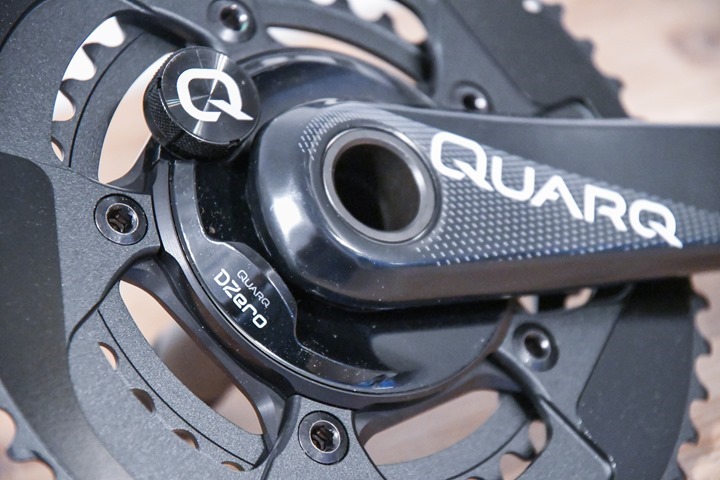
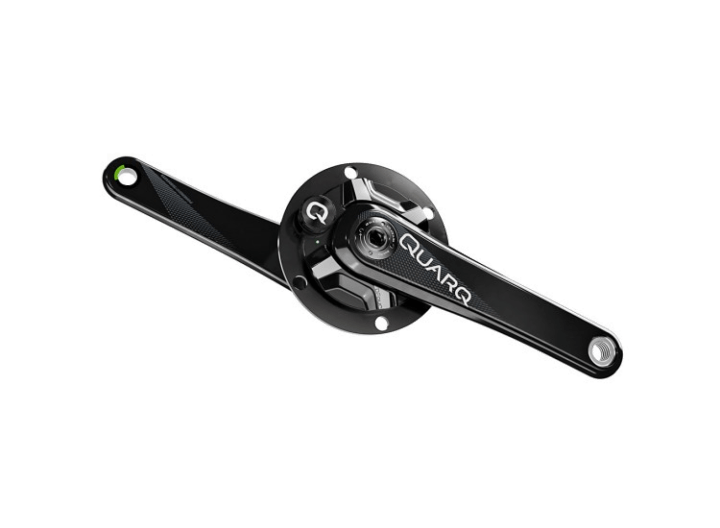
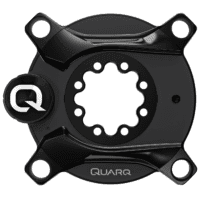
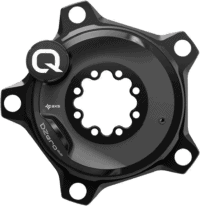

















So no issues picking up a signal on a watch on your wrist while out on aero bars?
In this case, I was testing on a road bike. Though, it’s virtually unheard of to hear of folks having aerobar related watch placement issues with Quarq units.
Hi Tim. The development process for new power meters has time dedicated to radio signal strength. (The bump you see on the DZero cover plate is making room for a great antenna. It’s not just a spot for a logo.) Our testing process includes both lab and field testing for radio signal strength. Field testing is a sight to behold! We use a Cervelo P2 equipped with a power meter and a rear rack holding a small laptop. Then there are wired receivers on the stem, base bar and aero bar extensions and even a receiver on a velcro strap being worn on the rider’s wrist. Finally, every Quarq power meter is tested for radio signal strength before it leaves the factory.
Troy I believe this statement holds true now “Pics, or it didn’t happen”. That sounds like an amazing testing rig.
Hi Troy, I just has my DZero installed and went for my first ride on Saturday. I had power dropouts every 5 mins or so, lasting 20s to 2 min, between the unit and my Garmin fenix 5 mounted on aerobars. Running latest firmware (non beta) on both devices. Anything I can do?
Hi Ben. This is abnormal behavior. Please email Quarq customer service on thinkfast@quarq.com. You can call them too. link to quarq.com They will be able to help.
So there is no general problem with the Quarq and a Fenix 5? I read that the reception of the Fenix 5 is bad at the moment (with my power2max however there are no issues). I am considering getting a Dzero and would like to be sure about this of course :)
Troy, Hi.
For some reason my iphone 6 and Dzero will not pair.. unit id 63311…
Hi JB,
I would recommend contacting Quarq Customer Service at thinkfast@quarq.com to run through trouble shooting. They will be able to help you.
“unless I see any major changes at Sea Otter later this week” — didn’t this already happen? :)
Also: what’s up with Quarq for Cannondale / Specialized? Stuck on the old platform with no DZero ETA still? SOL?
The casualties of writing virtually everything before and posting this week. Fixed!
Wheat Ridge Cyclery in Denver installed the SRAM Red eTap version of the DZero on my bike on October 4th last year. It must truly have been Serial Number 1 or 10 or something like that. Regardless, I have had Zero issues, problems or complaints with it. As Ray said, “it just works” and has continued to do so. We’ll see if that holds now that spring is coming to the Rocky Mountains…
Does the length of the crank arms affect measurement accuracy? Especially if I swap it out with a shorter version (aftermarket).
Thanks Ray.
No impact.
Appreciate the “Front fell off” clip with the great Kiwi comedian, John Clarke (link to en.wikipedia.org), recently deceased. Very funny man, and clip.
Do you notice that the battery power level in thew quarq app is stuck at 85%? My quarq dzero power meter never changes from 85%
Yes, mine also sits at 85%. Regardless of whether it is a new battery or one I’ve run for 100+ hours.
Saying that, the unit has been super solid. It arrived with firmware v1 on it so i did get one glitch on a very cold day, riding single track. Updated to v3 and it’s never missed a beat.
I use mine with a Garmin Edge 520 and Trainerroad via my phone app. 5 stars from me.
Mine also is at 85% since I have it. Quarq support told me this is a referenced bug…
The other problem I have is that power balance is not displayed on my Polar V800.
Ha, me too. Will keep an eye on it now. Thanks for the heads up.
To clarify, the ‘me too’ was with regard to the battery level
Yup, me too (as seen in the screenshots) – nice catch! I guess it’s eternally optimistic. :)
I’m sure if the Quarq folks didn’t know before…they certainly do now. Historically they’ve also responded here too, so I suspect we’ll see them make a comment on it.
Quarq’s digital wrench, Qalvin, displayed battery volts when it used ANT+. When we moved to Bluetooth Low Energy (BLE) we changed to a battery life percentage. BLE has a standard to represent battery life that goes from 0-100. You typically see 85% because power meter batteries sit around 2.9 volts for most of the power meter’s life.
so this is essentially a piece of useless information? it makes it seem like you have 85% of the battery life left. Is this something that will be updated in future to actually reflect how much battery you have left so you know when you replace it?
Hi Doug. Yes, displaying battery voltage is in our to-do list for Qalvin. Unfortunately I cannot give you an ETA. Bluetooth head units will, however, continue to use 0-100 — until the Bluetooth specification changes.
Hi Troy, have you had any reports from iOS users not being able to find their Quarq PM in the QAlvin BLE app once upgrading their iPhone OS to iOS11?
The app loads fine, but I can’t find my DZero (either searching, or entering the serial code manually). Have tried reinstalling the app, hard-resetting the phone and deactivating/reactivating Bluetooth on the phone.
TrainerRoad picks the PM up fine….Confused
Troy, Seems like your to-do-list is about the same as the one Mrs74 gives me the day after the Ironman each year reflecting all the things I’ve not done around the house over the last 9 months.
But is there any intent to progress this, as it’s always the least convenient time the battery dies. To be fair, I’m thinking of putting in a feature request to strava to log hours on a bike in the way they do with trainer KMs to proxy a battery usage and then preempt the change. And Strava is legendarily slow to do any feature requests so if they beat you….
My Elsa R Fell off last week! The bolt keeps on loosening off I was lucky i was only 4 miles from a bikeshop who kindly fixed it for me.
Quite honestly, that sounds like an installation error.
The link of below is not working.
MARCH 30TH QUARQ DZERO, POWERTAP P1 PEDALS, STAGES GEN2, TACX NEO, XERT
Should be all good now. Not sure what was up there.
It doesn’t work without logging in. Same with most of the links to the analyzer.
Grr…something is up. Looking at the backend to see why it’s doing that. Sorry! Hang tight!
Is there any crank-based powermeter that I can use out of the box with my original Shimano pressfit bottom bracket???? ( which is what 90% of the riders have installed)
Theoretically you can try fitting crank based power meter with FSA Megaexo spindle (Gossamer power2max Type S). But it might be very tight fit and honestly I wouldn’t use hammer on my power meter crank spider. There are also adapters for fitting GXP spindle (Quarq) to Shimano BB. Those are just workarounds though. I would just use proper BB (as I did, by replacing Shimano press fit with GXP pressfit).
Anything with a Rotor 3D crankset would work (not the 3D+!). Like the Rotor power meters or the Power2Max ones
Thx for the answers – still unsatisfying though.
Pioneer, any of the stages that use Shimano cranks, SRM – anything that uses a shimano crank.
Which DZero version should I buy for my Shimano Dura-Ace Di2 (On Canyon CF SLX 2016 model)
DZero or DFour spindle should be GXP as it is compatible with BB86 frameset when the Pressfit GXP BB is installed.
Looking forward to the 2IN review next week Ray
I’ve had one of their original Dual ones that got replaced with just an IN Power under warranty. I know you also had issues with the original, so hopefully we’ll see what you think
That’s interesting – I have got the original and although it “works”, I have signal range issues to a watch when out on the aero bars (hence my earlier question). Did your one stop working altogether?
I just hope Ray shows a video of the soft pulsing light that comes from the 2Inpower when you attach the magnetic charge cord. That’s my favorite feature.
I don’t think I took any video of it unfortunately (travelling at the moment)…though, it is rather pleasant. :)
Also waiting for the 2inpower review before I buy one, because I want to be sure there are no ANT range issues with a sport watch like the fenix 5s.
I have been using the Quarq DZero solidly for 5 months now and I’ve found that whilst it CAN produce good data, my unit has been suffering from an intermittent issue whereby the cadence and power values become very erratic for weeks at a time. Did you not experience any of these issues in your testing?
I contacted Quarq Support and eventually they acknowledged that it’s a possible bug in the firmware, a separate issue to the one addressed in the v3 firmware that you mention. I posted a thread up about it on Slowtwitch (link below) and thought it might be worth mentioning in case anyone else is suffering from it, thinking that they have a dodgy unit.
Hopefully a fix is on the way, because I love it when it’s behaving well and producing good data, but for the numerous workouts where the values are all over the place, I have to ramp the smoothing-interval of the power data right up to make any sense of it.
link to forum.slowtwitch.com
Got my Red DZero for a month without issue. I did upgrade to v3 before I start using it from day 1.
No, definitely didn’t see anything like that. I’ve taken note of it though and will see what Quarq says.
Hi Adam and others. I will give you some background then dive into what’s happening now.
Quarq’s accelerometer cadence was designed so that a cadence discrepancy in any single pedal stroke would be adjusted in the next pedal stroke. Therefore cumulative accuracy is unaffected and there is little or no impact on cumulative power values such as kilojoules, average power and normalized power. In objective terms, single pedal stroke accuracy in the worst conditions varies from magnet-based cadence by a maximum of 2%. And benchmark tests showed the accuracy of Quarq’s accelerometer cadence matched or surpassed other products that use accelerometers. We shared this information on the Quarq website’s FAQ for many years.
With DZero we received reports and saw ourselves that cadence would sometimes bounce up and down on head units around a steady/single value. Thanks to great input (and patience) from customers and sound work by our engineers we have removed the bouncing from the display but also improved the sampling rate and further refined accelerometer readings such that DZero now matches the accuracy of magnet-based cadence. This is something we are very proud of!
We expect to release a new version of DZero firmware that includes this updated in the next 7-10 days. It’s going through the final stages of testing now.
Many thanks for your replies in the thread linked above; great support from the guys at Quarq!
Unfortunately I won’t be able to update the firmware as the Qalvin app gives “Disconnected from power meter” the moment you tap on the power meter it found :( This is on a Samsung A5 (2017 model).
And I’m not the only one having troubles, judging from its low 1.8 rating in the playstore.
Galaxy s7 android 7.0
No problem using the app to update firmware and calibrate.
Hi Peter. I am sorry about the delay. I wanted to talk to our software and customer service teams first. Unfortunately we do not have a Samsung A5 in our test fleet. We have seen some issues with Version 1 of the Quarq DZero firmware and Android devices. One suggestion is to bond to the device (using the smartphone itself), then delete it, then try using Qalvin again. The low rating in the Play Store is mostly from incompatibility with Google’s own smartphones, which we are working on. I am sorry that your experience with Qalvin is disappointing. Please contact the Quarq Customer Service team on thinkfast@quarq.com if you need more help. That will be the fastest way to get any problem resolved.
@Troy,
Any update on the timing for the release of the updated firmware?
Hi Matthew. It’s in Qalvin now. You can install it and ride with it. We will announce it next week.
Troy,
I upgraded to v4 (i’m on a Quarq DZero Carbon, 110BCD, GXP) on Saturday, and did my first ride on Sunday – link to strava.com – and the power at points during the ride looked way off (<50 watts pedaling).
I will let you know if I continue to see this. Let me know if I can provide any info to help figure this out.
Hi Matthew,
Thank you for letting us know your experience with the firmware upgrade! I would recommend contacting Quarq Customer Service at thinkfast@quarq.com; they will be able to look at your ride file and help with trouble shooting.
I’ve been using this PM now since Nov 2016, no issues with the unit at all. There was a few units that needed to have bluetooth ‘switched on’, but although mine needed to be, it had an issue that was unique!
I had the previous Quarq PM, and had installed a magnet (with putty) to my BB shell some years ago, and I was having issues with PM flashing a red light, saying it needed firmware updated. Was just about to send it back to dealer to get looked at, SRAM guy on phone tells me to reset it, and says place a magnet in a certain spot, as I was doing it, the two magnets kept ‘attracting each other’, when I told him, the penny dropped.
Tip 1. Take off old magnet!
I certainly have my choice of power meters, and all I can think with this one is that it’s so ugly…
I guess that’s where we are now, with so many solid and low cost choices for power meters, I can choose based on aesthetics.
@ Dr_LHA
“all I can think with this one is that it’s so ugly”
“eye of the beholder”, and all that! OTOH, I think the Pioneer is unattractive.
Note about spindle lengths. If you choose the carbon crank versions, the PF30 spindle is the shorter axle version, so doesn’t fit all BB widths (e.g. BBRight). Alloy version is longer. Be careful as not all retailers are aware of this or make it clear when purchasing.
Are you sure? I would say it is the other way around. The carbon version has a longer spindle with BBRight and 386EVO compatibility, while these are not supported by the alloy version. The same is reflected on the Quarq website.
I use the DZero carbon version without any issues for a month now, nice product! One remark on installation: the instruction for BBRight was not on their website, therefore I had to e-mail Quarq support to get the advised spacer arrangement. They replied within 2 hours with the correct instruction, great service!
You are correct, I meant alloy BB30 was short, so you have to order more expensive carbon for BBRight etc. Got confused after multiple edits and still sent the wrong thing :(
Yes, the aluminum versions will not work in BBright and BB386EVO bottom brackets. Thanks for the correction, Rab.
Troy. So what you’re confirming is that I cannot install a BB30 alloy DZero on my P5 using the PF4630 BB?
Hi Jay. Correct. You cannot use an aluminum DZero power meter. The aluminum models are designed for BB30, PF30 and Cannondale’s BB30A bottom brackets. The spindle is not wide enough for BBRight and BB386EVO bottom brackets.
Thanks Troy. I didnt check back nor did i turn on notifications on this post :-(…and it was already pre-ordered. so now having to find a new solution, will be sending my alu BB30 version back.. Which DZero would I need to buy in order to use on my P5?
Thanks,
Hi Jay. The BB30 version of Quarq DZero Carbon will work. The BB30 version of the SRAM RED DZero power meter will work too — if you wanted to match a SRAM RED groupset. Both models use the same Exogram carbon crank arms.
thanks!!
Troy. I just took delivery of my BB30 DZero carbon and it seems the spindle is not wide enough.. non drive side has a spacer before the preload nut.. do i remove?
what spacer arrangement do you have?
Hi Jay,
You will want to remove the pre-load adjuster and black 5mm spacer from the non-drive spindle, and install a wavey washer instead. You will also want to install the 13mm spacer on the drive side. This will give you enough spindle length to clear the BBright bottom bracket.
To do so on the Quarq you’ll simply remove your feet from the pedals and then use your power meter to perform a ‘calibrate’ or ‘zero offset’
Surely this should read ‘and then use your head unit’ ?
I thought it was only the carbon cranks you could use on BBright? The alloy versions have warnings about not being compatible with BBright.
Can someone clarify this?
Yeah, my bad. Alloy BB30 is short, not carbon
Hi Ray – somewhat related, I have always wondered if there is an unintended feedback loop that impacts power output (distribution) based on single-leg power measurements. My thought is that we strive to hit power levels during training, racing, etc. – especially with power-based training methods – and that there is the potential to optimize for the “reward” by generating more power with the leg being measured. Has anyone studied this?
So the very limited non-scientific studies tends to show that when someone attempts to focus on one leg, it’s actually to the detriment of their total power. :(
I’ve always wondered about John’s point too. With a left only power meter if you’re trying to hit a high number, you might end up training yourself to have an imbalance that favors your left leg because the right leg’s contribution isn’t being included.
This is a different issue than whether it’s a good idea to try and correct a known imbalance.
I’ve read of similar consequences when cyclists over-obsess about “equalizing” both leg powers — that it can result in less *total* power output.
PMs like Pioneer & Garmin pedals tout that as a “feature”, but many of the guys at Wattage Forum are very skeptical, except as an aid to rehabilitation after injury.
Maybe we’ll see some well-controlled lab studies before too long.
That’s why best way to address serious leg imbalances is strength workout, stretching, physiotherapy and bike fit adjustments. Bike wasn’t made for single leg pedaling. Also focusing on displayed L/R balance and trying to even it out seems pointless and counterproductive. L/R balance is useful to evaluate if mentioned methods actually work. I wouldn’t use it for workout on the bike.
I have been running a stages power meter for about 3 years. I wondered about this quite a bit, and when I bought the quarq earlier this year for mountain bike expected to see left leg power higher. In reality I saw 49/51 at easy riding and 46/54 (l/r) when racing. So my experience is that the stages left only wasn’t making me train my left leg better, or at least not enough to override the general leaning towards the stronger leading right leg,,,
Do you notice any wobble in the chain ring? I have the bb30 adapter version (installed at bike shop), and it almost rubs the front derailleur in certain gears.
Ryan, I’ve had my DZero since… when did they first start shipping? I must have gotten one of the first sets. Either way, I remember that installing that was a bear. I have a PF30 BB and getting the spacing right and figuring out the preload… I must be an idiot or something. I also had an issue where I torqued it to the specs indicated and it was all bound up and wouldn’t spin. At first I used the spacer configuration they had in the install sheet (online) and I had to adjust the piss out of my front derailleur. Then it started walking around on me inside the BB. So, I reinstalled the whole lot with the spacers changed around… long story short, if you think it’s off, it might be off (or the derailleur needs adjusting? or is it when you’re cross-chaining?). Take it back to the shop and have them look at it. I would, however, say that the install instructions could be a little more detailed… however, it could just be the case that I’m an idiot.
Thanks – I have di2 and the shop said everything is installed correctly…just that the spider might be partially bent (it was new). Quarq support said this can be due to engineering tolerances in the spider and/or the chain ring. The wobble is a couple mm…doesn’t quite hit the FD but is within half a mm in a non-cross chain gear. I’ll watch to see if it gets any worse or starts to rub under more load.
I’ve had wobble in the new SRAM rings that came on a Riken PM. I didnt like the shifting quality on my otherwise Campy 11sp drivetrain, switched to Wickwerks rings, and those ran “true”.
Also Wickwerks shifted better than SRAM “powerglide” rings, very comparable to OEM Campy 11sp rings.
I have an odd question in comparing the Quarq Dzero and the Watteam Powerbeat. The Dzero is heavier, about 170g to 43g, and the Powerbeat has a lot of unaero edges and stuff on your crank arm. Assuming a normal course with moderate hills, which would be a bigger penalty for toting your power meter along in a race, the Quarg weight or the Powerbeat non-aeroness (to make up a word)?
A bit of a random question, but I have a hard time mentally having stuff in races that isn’t worth what it does and for me, the decision between these two very good power meters is which one will have the least impact on race performance (I know either way the impact is small, but still for me, this would be a deciding factor as lots of small things add up). I also realize the engine (me) is the most important thing to improve – I’m working on that every week :).
I guess the bigger question aside from weight would just honestly be the lack of accuracy in sprints on the WatTeam (outlined in that review). If you’re a triathlete, it’s likely a little impact. Whereas if you’re a road racer, it’s probably substantial.
I’m trying to find the Stages Gen2 analyzer and it’s trying to tell me to pay money to read the review.
Did this not get added properly? I can’t see it anywhere.
Sorry about that, not sure why the ‘Public’ checkbox wasn’t holding. Just fixed it!
On polar m430 you mean m460?
Indeed…
Any idea if/when Quarq is going to release a DZero power meter for mountain bikes that isn’t at the Eagle level? I can’t believe there isn’t a marked for essentially just a DZero AL for mountain bikes. I don’t spend enough time on my MTB to justify Eagle-level equipment or prices.
Hi Noel. Unfortunately this is not currently in the works. I appreciate you asking though, because if the demand is there we may begin developing one.
Troy: thanks for the response. That’s disheartening. I have Quarqs on 3 of my 4 bikes (road, TT, and CX) so I’d love to complete the set and get one for my MTB as well. But, as I mention, I just can’t justify a Eagle-level equipment for that bike.
I have to say I find it incredibly hard to believe that there is no market demand for a sub-$800 aluminum MTB powermeter that measures full output. I can think of three friends sitting within 100 feet of me right now that would be interested. All of us have the same delimma: we’re programmers and data geeks so the inherent assumptions of single-sided measurement are unappealing but we can’t justify an extra $350 for carbon crank arms we don’t want on a mountain bike.
I respectfully submit that Quarq really should re-think this position.
I have been using the DZero Carbon for most of this year without a problem, but there is a significant difference between the power readings i get from it and my Kickr2. Both are running the latest firmware, both are calibrated regularly but the Quarq reads anything up the 20-30w lower at 300-350w, there is more agreement nearer 200-250w but they separate as I work harder. I will usually run Trainer Road Power match to sort and ‘believe’ the DZero as that’s what I’m using to race. But have you found anything similar with the Kickr as I didn’t see if there was a direct comparison of this combo in your review (apologies if I missed it)
Hi Ian,
We have tested the power outputs of Quarq DZero and previous generation power meters versus trainers. We have seen them match and seen discrepancies like you describe. In our testing, making outputs match was heavily dependent on the gear you used and in turn how fast the trainer was spinning. You could do a similar comparison test yourself using a fixed power output, moving from the top of the cassette to the bottom in uniform intervals, and comparing the intervals afterward.
Our testing was rigorous. We warmed up and then calibrated the trainers using a spin down and checked the power meters afterward with a dynamic lab test that sweeps across a cassette.
I would recommend using one device indoors and one outdoors, and doing an FTP test on both, to ensure your training zones are correct and that overload and fatigue are properly managed. Quarq DZero has dual ANT+ and Bluetooth Low Energy, so it becomes an option for both environments when compared to our previous generation power meters.
There is one gimme that you didn’t mention. At the last major Quarq release in 2012, they changed their warranty to 2 years max (unlike, say, SRM, Power2max or Garmin, where it’s pretty much “lifetime” unless I’m mistaken). I had two Quarq fail last winter, both only 2-3 years old. They were both well looked after. One had some sort of strain gauge failure inside the spider, the other started draining the battery rapidly with an internal short-circuit. They’ll offer you a half-price replacement, but nothing more. I feel like that’s a bit of a short warranty for such a high-tech product.
A super quick glance at sites:
Power2Max: 2 Years
Garmin: 2 Years
SRM: 3 years
PowerTap: 2 Years
Now, in practice most of these companies (including Quarq) tend to take a pretty lax approach to enforcing it, as you even noticed. They’ll either offer pretty good discounts or just swap out units entirely no-questions asked.
I wish Quarq would support 48/32T or 46/30T chainrings. Road gearing stinks for those who ride primarily on hilly gravel.
I used a Quarq Dzero for about 3 weeks and it’s currently in the process of being returned due to and error when calibrating. Not very happy, but support from ThinkFast has been good.
When I was first calibrating the unit it showed a figure of approx -200 ish. However, when I was out on a ride, my chain came off between inner chainring and frame and ever since, my Garmin showed zero power. Tried recalibrating a number of times since and my Garmin (and the Qalvin app) and it was showing a figure of approx -1017.375.
I have returned the unit for warranty inspection to the retailer and hopefully it’ll be replaced.
I just had the same thing happen with mine. The chain dropped and after I fixed that issue the zero offset was reading 32000 instead of the ~150 that is normal. Not quite sure why the chain dropped as this is the first time I’ve had this issue without crashing. Went for a ride today and the power was showing zero, but the cadence was still reading. Can’t really do the return route as I’m already outside that window. Waiting to hear back from Quarq.
Did you guys find a way to sort this problem out ? I am facing exactly the same after a chain drop today.
Thanks
They replaced it.
Fit a chain catcher for sure. Assuming braze on FD they are a doddle and very useful to save frame etc when chain tries to go.
I’ve got the same issue, brand new, chain dropped, now cactus with calibration at 32,000. Very disappointed, looking elsewhere.
They did the same for me. Thank you for your reply.
Next step is adding a chain catcher to avoid this problem in the future :)
Yeah I think the next step is selling the quarq, there’s more stories of this issue popping up on other forums.
Unforgivable that if I drop a chain in the next few years, it’ll brick the unit.
I dropped my chain many, many times (unfortunately my front derailleur is crap) and it didn’t affect my Quarq Dzero at all. I heard the stories too, but those chain drops had to be pretty unlucky and catastrophic to mess up the spider that bad. Someone had to keep pedaling really hard despite dropped and stuck chain. With proper shifting technique I find it difficult to imagine…
Hello Mr. DCR, I know that the left and right reading is only an estimate and I watched your video showing how an estimation compared to actual separate pedal based power meter, but in your experience, how trust worthy is the left-right estimate of the DZero when you’re using it normally (i.e. you’re not trying to fool the system or doing one leg drills). For example, I just finished my first workout on the trainer after I installed the DZero yesterday. According to Garmin Connect, my left-right balance is 51%-49%.
Average L/R balance for longer intervals or whole rides will be quite accurate while riding outdoors (which can be seen on data provided in this interview). It might be off when riding on the trainer with less inertia because upstroke phase of pedaling is usually more prominent then and stronger leg ‘pulling’ power might be added to weaker leg ‘pushing’ power. In some extreme situations it might even report that weaker leg is stronger.
Technical question that I could not answer after looking at the Quarq website. In your review, you state “Since the unit isn’t a separated left/right power meter”. What exactly does that mean? It looks like it measures left/right discrepancy. Does it actually measure left and right separately, and more importantly, directly? Where are the strain gauges located for left vs right?
Thanks!
Hi Brian,
The strain gauges are in the crankset spider. The spider, chainrings and chain are what drives the bike forward, so we are measuring total power output — the combined output of both legs. To create left/right balance we split the pedal stroke into two halves. From 12 o’clock to 6 o’clock on the drive side is counted as right and 12 o’clock to 6 o’clock on the non-drive side is counted as left. I have heard this called downstream power balance, which is a decent term for it. Although it can prove useful for injury recovery, it is not a true left/right measurement.
Our view is that cycling is an aerobic sport — oft repeated in books and by coaches — and that training focused on the body’s energy systems is what makes you faster. Sports science and studies done up to now show that a rider’s own preferred pedaling technique is the most efficient, so we concentrate on reliable, accurate total power output.
Thanks, Troy.
Troy
Is there an issue with the readings showing right/left leg balance? Mine seems to be getting worse. To test the accuracy, I uncliped my right leg and rode a mile with only my left leg. No change on results. Is there a way to know if the issue is with the power meter?
Thanks
Ray,
You didnt mention if Dzero still supports a “zeroing” by back pedaling 4 times ? (or if you did, I missed it).
BTW, I’ve found that backpedal zero can be quite wrong if you do at at moderately high, forward bike speeds. Seems the high rpm freewheeling action combined w/ back pedaling exerts a bit of torque error.
Backpedalling in small chainring + larger cogs seems most accurate ,ie best correlation to a head unit (or a Qalvin) initiated zeroing.
Hi Tom. You can still zero the power meter by pedaling backward 4 times. Quarq’s Customer Service team will often say 5 times to make sure it’s done properly — to ensure you get 4 complete rotations — but 4 is correct.
Hi Ray, thanks for the review, very useful as usual!
One question, is Quarq going to introduce other metrics (pedal smoothnes, torque efectivenes…) as other spider based powermeters are doing (P2M NG…)?
Thank you!
Hi Aitor. We do not plan to introduce other advanced metrics soon. As I wrote above, sports science and studies done up to now show that a rider’s own preferred pedaling technique is the most efficient. We continue to focus on reliable, accurate total power output. Like many others, we look forward to seeing controlled studies and journal articles on advanced metrics, to find out how they can improve performance.
Some of the sports science to date on asymmetry and pedaling efficiency…
1. Bilateral pedaling asymmetry during a simulated 40-km cycling time-trial. Carpes, Rossato, et al. Journal of Sports Medicine and Physical Fitness 47 (2007) 51-57.
2. Electromyographic analysis of pedaling: A review. Hug and Dorel. Journal of Electromyography and Kinesiology 19 (2009) 182-198.
3. Effect of Pedaling Technique on Mechanical Effectiveness and Efficiency in Cyclists. Korff, Romer, Mayhew and Martin. Medicine & Science in Sports & Exercise (2007).
Thanks Troy, really appreciate that the guys at Quarq are answering at our questions. I will read the researches, but also encourage you to introduce some metrics as the ones mentioned above into your power meters.
Thank you!
Has anyone had any decent time on the MTB version? Any issues with the cadence data caused by the nature of off-road riding?
Ray, how much testing did you do on cobbles? You mention it in the test but did you see any abnormalities that might cause issues off-road?
Cheers!
Hi Mike. In all of our testing we have not seen cadence problems during on off-road riding. We have found accelerometer cadence to be excellent in all but the most extreme vibration environments — roadside rumble strips being the best example. I will let Ray respond about his testing and cobblestones.
Thanks for the reply, it’s great to see companies taking the time to respond to customers in places such as this!
As for cobbles, I did quite a bit.
There’s actually a bunch of files not included above that I did where I didn’t have multiple head units. For example I was doing a bunch of riding on cobbles of the Champs-Élysées back in February with it (up and down and up and down and up and down, trying to film something) – no issues.
I also took it on the same specific stretch of cobbles that caused WatTeam issues (and some others), no problems there either. Of course, cobbles are just a fact of life in Paris, so I’m always on them.
Awesome, can’t ask for a better couple of responses! Thanks guys and cheers again to Ray for the review.
Can someone help me?
I own a Cube bike, Shimano Ultegra FC-6800, Hollowtech II, 50x34T BB-86, does it mean i have to buy the Quarq DFour GXP spindle version? do i need to buy an extra adapter?
Hi iomk. The best Quarq power meter for your bike is Quarq DFour GXP, like you suggest. You must combine it with a PressFit GXP (BB86 Road) bottom bracket. Quarq power meters are built on SRAM crank arms, which use a tapered spindle. You must pair them with a SRAM bottom bracket. If you want more info on compatibility or help with selection, please email the Customer Service team on thinkfast@quarq.com.
Thx Troy for the info :)
Following up on “Anonymous Coward’s” question as I didn’t see a response: What’s up with Specialized and Cannondale PM’s? Are there any plans to move these to the current generation of product?
Hi dkrenik. We continue to sell the Quarq for Specialized Power Meter Spider. We have discontinued the Quarq for Cannondale Power Meter Spider.
Thanks Troy. I/we appreciate you taking the time to follow up with all these questions. My question is more about when might we expect the Specialized model to update to the current platform of PM?
Hi dkrenik. I am sorry I did not answer the second question. To remain competitive and to respect resellers who have existing products in stock we never reveal new or potential products before their official public announcement. I am not trying to infer anything there. I am simply saying I cannot tell you.
It looks like they discontinued both the Quarq logo version as well as the S-works version of the specialized spider. I’m guessing Specialized ended their partnership. Going to be interesting to see what Specialized will start offering since all their top end build models had come with the S-works logo Quarq.
Hi Steve. Yes, days after writing that comment we sold out. We continue to offer support, like we do for all legacy products.
So will there be a DZero version of the specialized spider or is that spider compatibility completely discontinued?
From what I’ve been hearing, it’s completely discontinued. Unfortunately that means if you need a new one you will have to switch to a power2max or SRM to keep using S-Works cranks.
I was just checking the quarq website and there is now a dzero option for specialized on there for $779. Currently saying they are back ordered but for something that supposedly wasn’t in the works it is good to see it on there.
Correct.
This is new, along with a dfour option for new dura ace (r9100).
Hi Ray,
any word on pricing or variation in models? My understanding is that you can basically get any sram crank as a quarq Dzero version. Which I suppose gives an opportunity for upgrades to those with a compatible crank. I think these stratifications will help comparisons greatly, as accuracy and features is starting to hit parity amongst manufacturers.
Hi Mickey,
Quarq DZero power meters are offered with SRAM’s Exogram carbon crank arms and, in some cases, forged aluminum crank arms. There are several models, each compatible with different drivetrains or groupsets. The Quarq website has detailed descriptions and offers a comparison tool.
Some bikes from Canyon, Cannondale, Cervelo, Felt, Focus, Fuji, Trek and others use SRAM RED and Quarq Prime Power Ready Cranksets that can be upgraded with a DZero power meter spider. Bikes with BBright or BB386EVO bottom brackets, such as those from Cervelo and Felt, have the Power Ready version of the RED crankset.
All of Quarq’s DZero power meters and the Quarq Prime Power Ready Cranksets use an 8-bolt crank-to-spider interface. This is different to the 3-bolt interface found on SRAM’s Force and Rival cranksets, so unfortunately they cannot be upgraded. The standard SRAM RED crankset uses an integrated carbon fiber spider that cannot be upgraded either.
The 8-bolt interface ensures accuracy when power meter spiders are installed and uninstalled or swapped between crank arms in the field. The 8-bolt interface is designed to mimic car wheel nuts or lug nuts. The bolts secure and center the spider on the crank arms; they make for a rigid and reliable contact point.
Please reach out to Quarq’s Customer Service team on thinkfast@quarq.com if you want help more information or help choosing the right power meter for your bikes — now and in the future.
I have the DZero since January or so and can recommend it.
That said, it was not trouble free. It died on me a couple of times and Quarq support suggested tightening a screw in the battery compartment. I did that and it happened again. Since it was a weekend, I could not call them and was tinkering with it, re-tightening the screw and re-seating the battery obsessively in frustration. Eventually it all worked and the unit has not died on me again. I am fearful what will happen when I need to change it. Seems like a manufacturing issue to me.
The app seems to have occasional trouble connecting to the powermeter and a firmware update required me to make a call to support again, since the app got stuck. Unexpectedly, the firmware update changed my settings. There are a couple of minor bugs/oddities in the app as well (like revolution counts that do not seem to be accurate), but overall it’s ok.
I truly appreciate the fact that there are different crank sizes. Once DZero is installed and working, it has been very nice. Nothing hangs of the bike (a la Garmin or WatTeam), nothing needs tinkering with, it’s just part of the bike and the bike is now sending power data. Nice!
Are there any compatibility limitations with regards to the type of chainrings for the DZERO? Or can I use any 5 bolt chainring from any manufacturer (TA, Stronglight, Praxis, etc.) and get still correct power measurements?
Hi Wesley. Accuracy is maintained if you use 5 arm/bolt chainrings from other manufacturers. The caveat is oval chainrings. Power values will be inflated 1-3%. We are developing firmware that prevents inflated values from oval chainrings, but it is not ready for testing or release. Once ready it will be a free upgrade through the Qalvin app.
Great. Thank you very much for your quick response!
Hi, can you give us an estimate of the release of the new software for oval chainrings?
Thanks a lot!
Hi Pietro. The firmware for oval chainrings is still in development, so I cannot give you an ETA.
Hy Troy, thanks a lot! I own a 2017 Cannondale Scalpel with xx1 eagle, which version would fit for me, boost or standard?
Ciao
Pietro
Hi Pietro. Cannondale’s 2017 Scalpel has the Asymmetric Integration (AI) offset rear triangle and drivetrain, which pushes the chain line out by 6mm. Quarq does not have a power meter designed for AI. We offer XX1 Eagle power meters in standard and Boost 148 configurations. Boost 148 pushes the chain line out 3mm. The Boost 148 power meter is what riders typically use on Cannondale’s AI bikes. You should be aware, however, that it is not directly compatible and shifting performance can vary. We recommend you seek input from other riders who are doing this before buying one.
Hi Troy, I’ve purchased the power meter but so far the new firmware for oval chainring has not been released yet, do you have any more info for us maybe on the release date?
Thanks a lot
Pietro
Hi,
If we use any 5 bolt chainrings from any manufacturer, is the guarantee still going to be applied ?
How are warranty issues handled outside the U.S. ? In particular in Europe (I sit in Germany).
My experience with powermeters durability is not too good.
2 Stages replace under warranty (these were handled within 2 or 3 days, they have a service center in Germany …. wouldn’t buy one again, though)
2 pairs of P1 replaced under warranty (right pedals died twice …. these two processes took weeks. Apparently the importer shipped them to the US for inspection … or they are just slow).
You always read that Quarq’s customer service is outstanding. Is this true for Europe as well? I’m about to buy a DZero, however, given my recent experiences I wonder how warranty issues are handled? Is there a European service center? There is one for SRAM but do they handle powermeters as well? Or is the potentially defective unit sent to the US?
For me this is quite an important information.
Hi Markus. SRAM’s service and tech centers handle power meters. There are service and tech centers in Germany, Netherlands, France, Scandinavia and United Kingdom among others. You must work with a shop/dealer/retailer to send product to a service or tech center. Anyone worldwide can still contact the dedicated Quarq customer service team located in Spearfish (USA) for advice and support. And we work closely with the service and tech centers so customers get a consistent experience worldwide.
Thanks for the response.
However, having to go to a dealer first is and not being able to send it directly to Quarq/SRAM is a big minus for me. Depending on the dealer you lose so much more time. Given the various options out there I’d rather get a powermeter that allows me direct contact with the manufacturer.
I replaced a Dura Ace FC 9000 by a dzero al, non hidden bolt, BB30.
The bike is a Felt DA3 2014. It used FSA 24 adapters in the FC 9000.
Now I can move the dzero for ca 1cm from left to right (I installed the black spacer,already). The Steel axel is to far. The old FSA adapters do not fit.
I have to buy adapters?
I tried it with Polar M450 and V650 head units. But it only shows cadence. No power.
Hi Sebastian. You may need to pair the DZero Power Meter with SRAM BB30 bottom bracket bearings. There are also spacers or shims in the BB30 bottom bracket assembly that may be necessary. Please contact the Quarq Customer Service team on thinkfast@quarq.com (or call them using the numbers on the website). They will be able to help you.
Did anyone get a Polar V650 to work with the DZero?
It is more 3 mm than 1cm
This was advertised as being able to change chai rings without sending in for recalibration. Did you change rings out yourself? Did you see any accuracy changes?
Hi Troy
I have a Dzero eagle xx1 and it seems to be significantly under reading (by about 10- 15%) compared to my quarq red road unit and previous legacy model xx1 quarq (which it is a warranty unit for). Will updating to V4 software help this?
Regards
Luke
I got a XX1 eagle DZero powermeter on my mountain bike for 2 months now. What I see sometimes is ride to ride zero offset variation I didn’t experience with other powermeters. Lowest was 399, highest 515, the variation between beginnig/end of ride is smaller though (about 10-20).
Does anyone know whether this has an impact on the accuracy of the power data and where it comes from? The installation of the chainrings was done with a torque wrench, and I had enough rides to have it settled.
Variation between start and end of the ride is the most important. 10-20 difference is within normal margins, as far as I know, and is most likely caused by temperature shift (+/- 10-20 change of zero offset corresponds to +/- 3-6W @ 90rpm). Of course changes caused by temperature shifts are normally taken care of by temperature compensation system so accuracy shouldn’t be affected at all. Bigger zero offset drift on longer periods of time is normal too and stabilizes at some point.
“Long-time Quarq users (and Quarq themselves) know that much older generations of Quarq units (i.e. those before around 2012 or so) had a bunch of challenges with battery caps and water ingest.”
Did you mean water ingress?
Thanks for this great review again Ray !
I see that Quarq provides 2 versions, BB30 or GXP bottom bracket version. Since you have tested a lot of different solutions which one would you recommend to upgrade a Shimano BB86 config ?
I know there is a BB 4130 bottom bracket from Rotor or a GXP BB86 from Sram. Some peoples say that 30mm axis of BB30 is stiffer ?
Thanks !
GXP is the only option fot BB86 frame. Typical BB30 crankset axle is too short for BB86 shell.
Good to know I though axle length were the same ! Thank you :)
I want to run a dfour with praxis bb30 to gxp convertor. Do I need anything other than the wavy washer that comes with the bb to install the cranks? Hoping this means I can avoid messing around with spacers etc…
Assume that the dfour is optimized for shimano chainline etc, so providing I have the correct bb there will be no issues with my dura ace chain rings/ultegra cassette set up?
Thanks
Hi Tom. You should not need anything other than the wavy washer — like you said. Quarq and SRAM GXP cranksets and power meters bolt straight into threaded GXP bottom brackets. You add a wavy washer for PressFit GXP (BB86/92). Now that’s for the standard GXP BBs. For the Praxis conversion BB, Praxis’ website says they include a wavy washer to account for bottom bracket shell width discrepancies. I would recommend that you follow their instructions. Then check that the crankset spins freely and there is no side-to-side play after you install it. The power meter is designed for the Shimano chainrings and chain line, and Praxis’ website says the chain line won’t be altered, so you should be set.
Many thanks for that info, although I think it is Praxis’s own o-ring washer that is designed to account for frame tolerances and the wavy washer that is gxp specific.
Could I ask a couple of other questions lease:
1) Is the manual offset superior to the auto (backward revolution method) and if so, what is the point of the latter?
I know in the past there have been some differences with the figures (drivetrain friction assumption or something?), but not sure if this is long since sorted/updated.
2) In the sram/quarq pdf manual it suggests that grease dissolving chemicals should be kept away from the unit. How does this work with your average chain cleaner then? Pretty hard to avoid contact during run of the mill bike wash.
Thanks again
Hi Tom,
1) The advantage of the manual zero offset is that you see a returned value. Monitoring this number from day-to-day verifies your power meter is healthy. We recommend manual zeroing. The backpedal zero is there so you can zero the power meter when you forget to manual zero and have already begun riding — after joining a group ride, for example.
2) Harsh degreasers or degreasers left on for a long time can damage the power meter’s cosmetics and begin to erode its water sealing. Power washing should also be avoided. Typical bike maintenance such as chain cleaning with dedicated cleaning agents, washing with detergent and water, and hosing and drying, are okay.
I left my SRAM RED 11-30 cassette in automotive degreaser overnight, by accident, and it was eroded. I was devastated. Some of those degreasers can be very harsh!
I made the wrong assumption that Praxis compressible spacer was a wave washer earlier. Sorry about that.
Thanks again for the reply, good info.
Tom
Hi! Is it considered good practice to ride for a little while before performing the manual zero offset? Or can you (provided the bike is at roughly the temperature you’re going to be riding at) do the zero offset at the very start, before you hop on to ride?
thanks!
Yes. Riding a bit before performing zero offset is optimal.
hi troy/rebecca,
i bought a quarq dfour one week ago. i washed the bike two times. zero offset value stayed very stable. 127/133.
just a question:
is this a right way to wash bike with quarq?
this video is from team katusha (using sram/quarq).
link to youtube.com
i think they use paraffine then soap then they wash the bike with water.
i use soap degreaser (chante claire normal degreaser) for 2 minutes on the chain/ front and rear derailleur and then water.
thank you for your answer.
ciao,
claudio
Hi Claudio. Yes, Team Katusha’s method is perfect. They use a dedicated bicycle degreaser, then soap and water, then hose everything off. It sounds like you’re doing the same.
thank you troy
grazie
ciao
@Troy,
Do the colored battery covers – link to quarq.com – fit the Dzero line? I asked this directly of Quarq support, and never heard back. I’m guessing yes, but want to know for certain before I order.
Thanks,
Matthew
Hi Matthew. Yes, they fit. I am sorry you did not receive a reply. The Customer Service team are normally very good. Best wishes for your riding and racing.
@Troy,
Thanks
@Troy,
Sort of related question: does this battery cap for legacy (I have a Riken on my Parlee Chebacco gravel bike) – link to quarq.com – provide better water ingress protection than what comes standard on the Riken?
Hi Matthew. That cap will be identical to what’s on your RIKEN power meter. If you have concerns about water ingress, please contact Quarq’s Customer Service team on thinkfast@quarq.com. They can discuss it with you in detail and, if necessary, give you advice or small parts to correct any problems.
Hi
Need some help to choose the right quarq PM, pls.
I’ve an old Shimano Ultegra 6600 triple aluminium crank. Thanx for your support !
Hi Gil. Unfortunately Quarq does not offer a power meter for triples. You would need to move to two front chainrings. If you’re keen to do that, the Quarq customer service team has a good understanding of SRAM’s wide-range groupsets and can offer advice. Your bike shop should have decent knowledge of wide-range offerings from every manufacturer. Sorry we can’t do more.
Thank you for your answer !
Can you tell me which amont i can choose with à DZero Aluminium, please? In SRAM 50-34 chainrings is it ok with a shimano ultegra derailleur and shimano chain??
Hi Gil. The Quarq Customer Service team are the best people to help you. Please email them on thinkfast@quarq.com.
Hi,
Where can I get the bowl of the stack in other colors for my dzero?
Thanks
Hi Raúl. Your local Quarq distributor can recommend a shop in your region. link to quarq.com You could also order a set of colored battery covers from online retailers that stock Quarq products, such as Wiggle, Cyclepowermeters, Bike24, Bike-Components.de and, in the USA, Competitive Cyclist.
What kinda Zero offset changes did you notice between the start and finish of rides Ray?
I normally see around a 20 point change. Although haven’t been checking so much recently. I just did a 40 mile ride that look me a little over 2 hours and the offset started at -217 (checked it around 10 minutes into the ride as forgot at the start) and by the end of the ride the offset was -261.
Thats a 44 point change which I believe is around a 10w difference at 90rpm That’s a fairly significant change! and I don’t think I should be seeing such a big shift over 2 hours?
All the chainring bolts are torqued to spec with a torque wrench and the chainrings have been on the bike a little while now so it can’t be anything to do with settling in still.
Dzero Red stops recording power after 5-10 min stand still in the middle of the ride. I still see the unit, still get the cadence readings but power is absent. Can’t get it back to work what ever i do.
Calibrating returnes error 49.
The next day it works perfectly, until another longer coffee break in the middle of the ride…
Hi Mihai. Please contact Quarq customer service on thinkfast@quarq.com. They will be able to help you.
I’m getting mine in just a couple weeks! Does it broadcast in both Ant and Bluetooth at the same time? I’ve got an old Edge 705 that’s only Ant enabled, but I’d like to log the ride with Strava via an iPhone/Bluetooth as I’m too lazy to manually upload the 705 record.
Thanks Ray.
Hi Brian. It broadcasts both at the same time.
A bit off topic: When I link the Dzero Red with Zwift (with a ANT+ Stick and a Computer) i don’t get any readings on the Garmin 810 or 910XT (Both ANT+ devices).
Hi Mihai. Can you please contact the Quarq customer service team on thinkfast@quarq.com so they can get more details? I explained your problem to them and the engineering team and, from an ANT+ standpoint, what you’re describing should be impossible.
Anyone else having trouble joining the exclusive club of Quarq Dzero owners?
Ordered my Eagle Dzero in March. Then SRAM Germany told my dealer I would get it in April. In April they told my dealer, sorry, June. Now they say sorry, July.
Looking at Quarq’s website I can see “new orders ship in 14 days”. Does Quarq value its international customers less? Is this the new “America First”?
Riding my bike without a powermeter makes me feel so naked. Not sure if I should cancel the order. In July they probably tell me August. And then, because of vacation season, September.
Apologies for the rant but sometimes shopping can be so frustrating.
Quarq brought online a secondary manufacturing line back in April or so. Unfortunately though, they’re separating things out where one line is focused on Quarq.com orders, and the other on retailer/distributor/dealer orders.
Hi Stefan. We recognize your frustration. Thank you for speaking up. We are ensuring our distributors have product in stock – to satisfy riders worldwide — then quickly fulfilling orders from the website, online retailers and bicycle dealers so no-one waits too long. There are no priorities in the factory itself — the manufacturing team is making as many power meters as they can every day for everyone. Can you please email the customer service team on thinkfast@quarq.com and share your contact details and preferred retailer/dealer? You are waiting too long for your power meter and we want to fix that.
Hey guys I have a question about the aluminium crank, bb30 version. It comes with a longer spindle( for bb30a) and a 13mm spacer, but after installing I realized that because of the extra length and spacer on the drive side, the center of spindle is not at the center of the frame and my chainring is far out for me to shift to the big rings, does anyone have experience with that?
Hi Bin. This is our internal instruction on BB30A aluminium crankset installation. We will have this on the website very soon. It should give you what you need. link to quarq.com
Thank you, im having bb30a crank with normal bb30 frame, is this the instruction on bb30a frame? i think i need the preload adjuster because the shims and spacer are not wide enough
Hi Bin. Yes, you need the preload adjuster. Please contact the Quarq customer service team on thinkfast@quarq.com if you continue to have problems. They can identify exactly what parts you need, help with the installation, and give you advice on shifting performance.
What is the spindle length of the DZero aluminum BB30? I see that it is shorter than the carbon version, but have searched and cannot find the actual spindle length.
Seems to be an excellent powermeter, with great and fast support, but at the same time it is useless.
One month ago ETA was May-29. Today ETA is unknown (according to bike dealers)
So pre order and pay a significant amount of money and receive it sometime in the… future.
I am afraid that I’ll have to consider other options.
Hi Paul. I wrote a little about this above… We have doubled production capacity. We are ensuring our distributors have product in stock – to satisfy riders worldwide — then quickly fulfilling orders from the website, online retailers and bicycle dealers so no-one waits too long. Can you please email the customer service team on thinkfast@quarq.com and share your contact details and retailer/dealer? We have product in stock and want to help you.
Have to say Paul, that this has not been my experience at all…
Ordered a Quarq dfour on 29th May via UK based online retailer (I live in England). Product was set to be available from 5th June, but was happy to wait as got a good deal with Bank Holiday discount.
However, the next day I received an email to indicate that there would in fact be a week or so’s delay and to ask whether I was happy to wait. I was fine with this, although now a little sceptical that the suggested time frame would prove accurate.
Fears were totally unfounded however. June 12 was the date I was given for dispatch and email arrived that day to say it was on it’s way to me via 24 hour free delivery.
Received today (13th) and was up and running in less than 90 mins with no issues whatsoever. Bear in mind that included taking down my current dura ace 9000 set up with praxis bb30 to shimano bb and changing to bb30 to gxp bb plus full installation of chainrings/cranks.
Also had excellent support and feedback from all the folks at Quarq prior to my purchase, when no doubt boring them with numerous questions about various minor details etc :)
Finally, ride quality/bike feel is so similar to the full shimano setup which is a real plus.
No chance to do extensive testing of the actual data yet, but nothing to suggest that there will be any problems on that front either.
Hello there,
I just bought and installed Quarq DZero a week ago. My question why L/R Balance is not display on the Garmin Connect?
Could somebody give me a shade of lights how to solve this?
Secondly, is there any other software to see the performance measurment other than Garmin Connect?
Thanks in advance.
Anyone else find Qalvin BLE app a bit all over the place?
I have a revolution value of 290/300 when the bike is stationary and a small torque reading at the same time.
Then if I do a zero calibration things go bonkers and all the settings change themselves. Torque direction goes to reverse, auto zero and power balance turn off and no offset number (just loading…) displays on the main screen.
Not really affecting my use of the dfour, as I can do most what I need via head unit, but still very odd!
Hi Tommy,
I am sorry I have not replied sooner.
Qalvin’s revolution count is used to verify accelerometer operation. It resets every 65,000 revolutions. We are considering a change to make this number more meaningful for power meter owners.
The small torque reading is torque inherent in the power meter from assembly and installation. Bluetooth low energy has no way to prevent this from showing. Qalvin Legacy, which uses ANT+, had a small buffer so the small values were not displayed.
Can you please contact the Quarq customer service team on thinkfast@quarq.com about the changing settings? Please give them the model and serial number of your power meter, what version of Qalvin BLE you are using, and what smartphone or tablet you’re using it with.
Troy
How are you deriving your calculations of zero offset drift to wattage impact in the observations of drift? n (i.e. “+/- 10 to 20 translates into +/- 3 to 6 watts at 90 RPM”) I’m curious to understand what exactly the zero offset values actually mean that shows up in my garmin 820, and at what levels would the actual number and/or any drift indicate something could be askew?
Zero offset values are torque displayed in units which are 1/32 Nm (1 calibration unit = 1/32 Nm or 0,03125 Nm). So zero offset value of 100 = 3.125 Nm (100*0.03125) etc. To calculate power at given torque (Nm) you need to multiply it by 2π (6.28) and cadence and then divide by 60 (torque*2π*cadence/60).
Quarq Red issue: Power readings don’t work, I still see the unit, still get the cadence readings but power is absent. This happends random (example: morning ride works fine, evening ride power won’t work at all). Can’t get it back to work what ever i do.
Calibrating returnes error 2!
Hi Mihai. Please contact Quarq customer service on thinkfast@quarq.com or speak to the dealer where you bought your power meter. The Quarq customer service team believe there is something wrong with your power meter. They said you could verify this using Qalvin BLE. The zero offset value will be significantly outside +/- 1000.
Totaly unusable unit, the power reading works only rondom. Calibration error 80. For the amount of money it cost i find this totally unnacceptable.
Will send the unit back and buy a half of price, working, Stages power meter.
What Quarq did support say when you contacted them?
If your unit is faulty it will surely be replaced. I would very much prefer new working Quarq than Stages even at half of the price. Especially if you already paid for it.
Mihai like the other and even quarq them self suggested contact the support line or the place you bought it from
Never understand the hate on stages.
I now run a dfour after years of running various stages and whilst I love it and am ‘probably’ happier, there is not a lot in it.
Never seen anything from the dfour that would suggest any data from stages is not accurate (taking into account and slight right leg bias that manifests itself at certain intensities) and stages certainly a bit lighter and easier to install + move around bikes.
Mine 3 years old Stages was solid too. I didn’t regret purchasing it, as it was great training tool (much better than HR monitor). My brother is still using it with great benefit to his training. But when comparing to Quarq Stages is inferior in every way. It has bad waterproofing, weak signal, and it’s accuracy depends solely on riders leg balance (each of those problems I experienced to some extent). Stages is nice product but it’s not in the same league as Quarq Dzero/Dfour. New dual sided version might be, but at the moment only Team Sky have those.
I think the 2nd gen stages was a big upgrade on waterproofing and signal drops to be fair,
Can only speak from my experience, but never had one signal drop in 1000’s of miles of riding and water ingress never a problem either (in some pretty foul UK weather).
Only issue I had in terms of hardware was always battery drain when idle and I simply popped the battery out if I was going to be more than a day off the bike.
Don’t think the dual sided stages is doing much these days, certainly nothing from Sky at the tour this year.
But yeah, I agree that dzero/dfour is a superior product (I use and love mine as mentioned). By how much though and is it really worth it if you are on a budget and pressed for time and lack the necessary skills for installation I don’t know?
Stagea gen 2 was my first pm at less then 400$ but I think stages may be getting a little greedy on the 5xx-6xx some of the new left leg cranks are costing. And considering they only include one year of warranty and want an extra 105 for 2 you could end up spending 6xx-7xx on a pm just to have the same warranty as quarq and p2max which puts them very close in price to a spider crank pm.when on close out they are a good value. They do have a benifit of only needing one pm if you run mutiple carnks with different size chain rings. But if I had to pay 649 or 629 or even 529 vs 701 clever training sells the dzero for with the vip membership. Or if you want uk retailers if in the usa can have quarq dzero for as low as 5xx and 7xx for the carbon version which puts them at stages price. But either are much better than nothing at all
With regards to temperature compensation, German road bike mag TOUR has a powermeter test in its current issue. Lab and field tests which included temperature sensitivity tests (lab). They always take an engineering approach to testing.
They concluded that the Dzero temp compensation does not really handle larger temperature changes very well. The competition seems to do this better (Infocrank, 2Inpower, SRM, P2M NG). Now I’m a little bit concerned about my Dzero’s accuracy.
Any chance you have a link to the full test?
While sometimes they’ve done good work on power meter tests, I’ve also found cases where they’ve messed up some basics too. Just curious to see how the tests were done in more detail.
For the sake of study…
link to goo.gl
Hmm, was there any more detail than this? In particular I’m curious how quick the temperature shift was. Not saying it’s right or wrong, more just curious on what they did there.
Also be somewhat curious how they validated that. I guess I’m always skeptical, especially given SRM is well known to have temperature drift items, so it’s odd they didn’t find that there. My concern would be if they used lab equipment that wasn’t designed for temp shift, in which case they’d have found the rare scenario where the majority is wrong and the minority correct.
Anyway…always looking for detail. Doing mechanical tests like that is something I have considered (building such a system), but I always found far too many flaws in using them for testing that they are too easy to fool. Though, building a temperature controlling chamber is definitely something on my radar in DCR Cave V2, wherever and whenever that might be.
Ray,
Great review as usual–thank you!
I was looking at your 5 minute power for March 24th, which seems to show a 20w different between Quarq @ 295w and Neo @ 275w. Your March 5th show an even wider gap at 5 minute power of > 30w if I read the chart correctly. Other comparisons show similar gaps.
Isn’t that a little bit too much actually?
You suggest and I agree that at 600w the difference can be as much as +24w but it could also be 0w or -24w yet it seems the trainer is pretty consistently 20w less and never the same or more than the Quarq or P1.
is it more likely that those power meters are actually pretty accurate but that there around 20w loss between the crank and the cassette?
It depends. So +/- 2% on 300w (simplifying) is 6w each, so a net of 12w. Thus giving you 8w of chain loss. That’s definitely within margin of just the difference between a clean chain and a dirty chain, let alone the drivetrain efficiencies: link to bikeradar.com
I usually put drivetrain loss at about 1-3%, depending on how clean your bike setup is. Mine is rarely very clean.
Hi, with a budget of just under $ 900, do you think the quarq dfour is an excellent alternative to the most expensive SRM or the cheaper but less precise powermeter stages? I have an ultramarine 6800 crank and taking the quarq four in carbon I would like to keep up the overall weight of the bike … what do you think?
I’d easily choose the Quarq over the SRM. I’d also choose the Quarq over the Stages.
Thanks for the answer, correct me if I say a wrong thing but by mounting the quar d four instead of the ultrat 6800 the total weight of the bike should remain unchanged right? What are the lowest light left power meters ever?
I have a question. I have full Campagnolo Chorus group set.
Can i use a Quarq Dzero Carbon Power Meter Chassis with the appropriate chain rings to replace my existing Campagnolo Chorus Crankset?
Yes it will work. You can use any 10/11-speed chainrings compatible with Quarq (Campag chainrings are not compatible with Quarqs spider afaik). Shifting performance should be fine.
Hey Ray I am currently just window shopping on power meters a little bit. this new unit has my interest as the aluminum version can be had for 700$ after clever training discount. Just wondering how you think this stacks up vs say riken pm
Accuracy-wise they are both well into the solid territory. So honestly it’s mostly going to circle on whether or not you care/want Bluetooth Smart connectivity (since the Riken AL doesn’t have it).
Areas that it can be useful for are connecting to Zwift via iOS apps, or just general iOS apps like Strava. As well as Polar or Suunto devices/bike computers.
Is the quarq dzero non hidden bolt the same as the hidden bolt only change the way the spider is mounted by the 8 bolt interface? The spider is exactlly the same in the two versions? This is important stuff that DC RainMaker can check please. Since to find sram chainrings is way more easier to get the HB versions.
Cheers and keep up the good work.
Yep they are the same other then the hidden bolt. I wouldn’t say finding sram 22 chain rings is way easier. As a standard non hidden bolt is much more popular then a hidden bolt
I am considering putting this on a different bike but I am concerned that my current P2Max and Quark DZero will not report the same numbers and I want it to be consistent. Should I go with all the same powermeter on all bikes or will the P2Max and Quark D Zero parallel each other. I currently have that issue with my kickr and P2Max
Thanks Ray for all the great help, I love my P2Max that you helped me purchase
How much off is your kicker compared to p2max? The kicker if measuring slightly lower is normal as it’s taking power at the end of the drive train and there is some losse threw it. The quarq and p2max would probably be very close to each other in power data. But if you want to stay with p2max they do have some cheaper 610-630 fsa cranks
It is non linear. Flickr over-reports approximately 10 watts at 100 and 20 watts at 200. Some reading indicates that is a fairly common problem.
hmm if it was me just for the sense of having a pwm read close to same as possible id just grab another p2max specially if your able to fit one of those cheap fsa ones.
Thank you, that is the way I am leaning. Just thought I couldn’t be the only one that is up against this problem. Wanted to see how others handle it.
no problem man.the truth is in the avg power at the end of a ride a solid power meter would be very close to each other. so a quarq on one bike and a p2max on another wouldn’t be the end of the world. but like in rays graph sometimes at certain powers pm can vary a little bit from one to another. and since theres not a big $ difference between the two its favorable at least to me to try and keep them the same as possible. also since power is mostly a training pace tool and mile stone people set for improvement to be set. so it ends up being not so much how perfectly accurate it is more so if it stays solid to its self. I wish you the best of luck on what ever you decide to do
In my opinion there is same chance new PM readings will be slightly off your old one regardless if it’s power2max or Quarq Dzero (and same chance their readings will be very close to each other). Even power meters from the same manufacturer can differ slightly, still staying within the specs.
Gentlemen,
Thanks for all the help. I have decided to try the quarq. I believe the anomaly that I discovered in the wahoo kickr will not be repeated with a quarq and P2Max. The main reason I wanted to try the quarq is that the bike shop can install, no need to purchase and ship to the store and the clean integration of sram red gruppo. Another reason is the future proof option of atn+ and BTLE. I will let you know what I experience.
Nice they will probably be just fine as both are crank based units. I’d bet you will see a few watts difference and the same story would be seen even on another p2max. Easy way to test would be as long as the bikes are similar so drive train and tires don’t skew the numbers on the kicker. Is put it in erg mode and do 200 watts for a bit and see what each pm does. Hopefully the lbs isn’t hitting you hard on the price.
So I have had the Quarq for a few weeks but have not done alot of testing. I ran a small test the other day and the quarq and kickr were dead on…go figure. This would suggest the P2Max was reading low all this time. More testing is needed to show anything conclusive. I also had something strange happen and wanted to get your thoughts. The garmin 520 gave me speed and distance while on the kickr, but receiving data from the quarq. This has never happened before with the P2Max. My only explanation for this is the quarq has a cadence sensor just like the P2Max but now I have etap and the garmin can know what gear I am in. So it is possible to calculate the speed and thus the distance, just not sure the garmin would perform that calculation. I also did not have the etap connected to the garmin at the time so it is highly unlikely my theory holds water. What has been your experience? It is not useful or important to have the speed and distance, I just like solving the mystery.
Attached is the file uploaded from the Garmin to Training peaks. If anyone wants to sleuth around a bit. Garmin 520 riding on a kickr on zwift but garmin linked to quarq pm and zwift to the kickr.
test
I’m losing credibility on the thread as I cannot delete the last two posts and the file would not attach. Maybe I need training on form posting before testing powermeters.
Hi Doug-
It’s the thought that counts in trying. ;)
For the site here, you can only attach picture files to it. So things like .FIT files, etc… won’t show up. For those it’s best to just use something like Dropbox, OneDrive, Google Drive, etc.. and a link (sometimes if you put two seperate links into the comment box you’ll temporarily get placed into the pending queue for me to review, but no biggie). Just simply stick the files in a single folder and share that.
For comparison files, you can also use the DCR Analyzer to compare two power meters at once: link to dcrainmaker.com – then you can share the public links.
Cheers!
Thanks Ray, always good information, accurate, and to the point.
On that note here is the file. link to dropbox.com
Just picked up the carbon version of this from Ribble for a crazy 721 USD with a 10% code and there 15% off gold membership. which is only 20 bucks more then clever training wanted for the aluminum one plus the 3-5 week wait ,plus quarq’s back order pushed me away other wise clever training is awsome . But it’s only in gxp on Ribble so anyone looking for bb30 I’d say look on starbike they seemed to also have some pretty good deals. But make sure they ship royal mail that goes to USPS in the states or you will be hit with imports by FedEx and UPS even though crank arms are exempt from them
I have found my dfour to be mostly excellent in over 1000 miles of riding now. Very reliable in all weathers and numbers well in line with what I would expect after years of using various stages units.
Only annoying issue for me has been an occasional power spike.
These have come in two forms:
First is a big cadence spike in the middle of otherwise steady power and cadence output. For example, a one second packet of 150 cad/700 power during a climb when doing 80-85rpm, 350-400w. No idea why these occur.
Second is a huge spike to 2500 or even 5000 which corresponds with a blank (missing) cadence value when analysing the .fit file later. Again, no idea why these happen.
Previous power spikes with stages were 99.9% related to rough descents, but there is no such pattern that I can discern with these.
Both have been reported to Quarq, but would be interested to hear if anyone else had experienced anything similar.
Cheers,
Tom
hi tom,
i have max power spike occasionaly with my two quarq (i had two in 40 activities with d four, and 3 in ten activietes with d four 91).
i have two d four. one d four and one df 91 (the one for da 9100).
don’t know if spikes in max power are garmin 520 fault or quarq stuff.
d four is on a cf slx aero canyon and d four 91 is on a giant tcr sl.
i sent an email to quarq and they answered me they are going to release new firmware to avoid this problem.
claudio
Thanks Claudio.
Good to know.
Interested to see the what and when regarding firmware update.
Has anyone tried the Dzero with a Polar M450? I know it works with the newer M460.
Hi
Any idea what is the dzero spindle length?
Planning to fit the dzero 30mm spindle to a BSA 68mm frame with Chris King Threadfit 30.
I am uncertain of which conversion kit to use, will it be the conversion kit #23 or kit #24?
Many thanks in advance
why not just get the gxp dzero? as geting bb30 to work in a threaded frame can be quite the mission and may not work well depending on the spindle length of the bb30 crank. or is there a reason you want to run a bb30 crank? you could possibly use a BB386EVO threaded bb since it uses a 30mm spindle and the bb is listed as compatible on the carbon dzero
Has anyone heard of updates to the battery level readings and reporting for the DZero? This has really borked me with my battery going out in the middle of one of my intensity rides and losing all of that data. Head unit reads battery good, and the Qalvin app reports 85%. I go out for ride only to find out mid ride that the battery has died…..GRRRR
I understand how this might be more complex than my expectations, but for 2017 this does seem trivial. I would like to see an option in the Qalvin app the notify me on my phone of low battery level, and optimally notify me at something reasonable like 15%. Or allow the user the option of setting the level for which to notify.
Regardless, it does not seem reasonable the need to count hours down to estimate battery life.
Or maybe someone has some other suggestions?
I am there with you I wish they could fix the battery level indication
Hi everyone,
What kind of variations in calibration results should I consider normal/abnormal ? My dzero carbon gives results around -250 but sometimes moves from -150 to -350.
I am quite new to it so I have a hard time understanding what can cause this type of variations and whether they are normal.
Also, does the crankarm position influence the results? I use to calibrate with right side at 6pm but does not know whether it is good/bad/neutral.
Thanks
Drive side must be at 6pm always. No weight on pedals, stationary bike.
Numbers wise, the less drift the better obviously…
New install (or retorqued) rings/bolts take a while to bed in, but then there should not be a massive amount of change.
For example, my current numbers since most recent tightening and after settling, are between -22 and -10, so a movement of 12 at the very maximum. Usually a lot less than this though and tend to be within 5 from ride to ride.
I think it’s partly dependant on temperature? My zero calibration before ride varies with temperature and fluctuate very little (within a few pts each ride). I’m living at sub-tropical area of the world.
Also I tried different crank arm directions at whatever o’clock and the calibration values were not affected.
Exactly. Temperature is the key to the zero number being slightly higher or lower.
It’s been said it’s good practice to put crank arms in 6 o’clock position to keep zeroing conditions consistent. But I can confirm that it doesn’t really affect zero values. You can put crank arms in whatever position without worries. Considering chain rings are already set, temperature is the major factor in zero offset drift. Another one I observed are bolts coming little loose due to vibrations on very bad road surface.
I have a DZero and love it but need to change crank arm length as my fitter recommended smaller cranks. How can I go about doing this? Withe the previous Elsa/Riken generation you could get a Force crank that used the same 3 bolt interface. The DZero uses an 8 bolt interface.
How much of a length difference a you changing? If you are only going 2.5mm you probably won’t even notice it
I second that. I have been using 172.5 and then tried 170 for a while, then back to 172.5. Now I’m using 175. (they are on different bikes)
No I dun feel the difference.
It all depends on individual rider bike fit issues. For some people it doesn’t really matters. For others it might make world of difference. Would be nice if Dzero/Dfour compatible cranksets (Quarq Prime) were somehow available for individual customers.
Hi Ray,
These days im more interested in following my torque values instead of watts. Do you think there is any merit in this?
I have used Stages mobile app with my phone to analyse how much torque I can drive scraping the foot backwards on the pedal stroke using a standard and a midfoot cleated shoe.
Im driving at efficiencies and would like to see these torque values on my Garmin edge 820. Any ideas or insight here?
Kind regards,
Demetri Mamacos
Hello Ray, thank you for sharing file. I analyse your files with WKO 4 and choose some small ride/laps on your outdoor ride…Avg w for Quarq vs P1 vs G3: 22’45 after beginning: 3’47 : 311w Quarq vs 311 w P1 vs 303 w G3 then 27’45 after beginning: 2’34: 379 w Quarq, 388 w P1 ( cut off for several seconde P1, correct dot manually 0 to 380 w) , 379 w G3, then 2’37: 358 w Quarq, 350 w P1, 346 w G3, then 3 ‘: 270 w Quarq, 278w P1, 260 w G3. it’s not always so accurate when you analyse very précisely. Alban
As Damien noted, 3-4% is expected actually, and I’d almost be more concerned if they all matched. For example, you’ll note in most cases above you show the G3 as the lowest, which is correct. That’s because the G3 is ‘down drive-train’ of the others, so it should be the lowest by 3-5%. All of which ignores the +/- 2% that most of these units have.
Yes i know for friction loss in drive train for powertap G3, lubrifiant, chain wear and you can wasted energy in gear combinaisons too. Between 39/11 and 39/17 and at 250 w you can lose 3 watts at 250 w ( Friction fact doc) . I compare powermeters for 8 year and most of time on field. On home trainer, there is no enouth différence, it’s too smooth. When i am on fiel, it’s only in uphill, with no wind, same température, weight control…calibration, off set…
theoretical calculation of watts etc….for the moment only SRM is under 1 % accuracy.
the 1% and 2% a lot of times don’t take into acount the diffrent brand power meter you compare it to could be 2% in the other direction of your 1% not to mention how each meter does temp calibration different so even if you added an srm in you still could see 3% off between the srm and another power meter depending which way the error went. not sure where you are going at this point though as your original post said it was not that accurate? but that not what i see other then the part where you said one drooped the power data. If you had been comparing power meters for 8 years i am sure you would have seen data where the error % in multiple power meters can = a bigger % difference between them then just the quoted percentage for the single power meter
Damien hit it on the head. Simply put – if you’re only seeing 3w of difference between an SRM and a PowerTap, then something is wrong.
Also, Friction Facts actually talks about upwards of 10w of loss just depending on the lube you use. The 3w figure you’re quoting is the difference between two different chains. All of which assumes you have a clean chain (I assure you, mine is not as seen in the photos).
There’s no disagreement in the power meter industry about drive-train loss. It’s a real thing. It’s how Friction Facts made an entire business of things.
I see a Max of like 3-4% diffrence on a rough gusse between powermeters which seems pretty normal exspecailly when one you are comparing the quarq to cut off for several seconds. 3-4% in-between brands doesn’t seem like anything
Dear Ray and probably Quarq reps,
I am feeling real desperate. 3 weeks back I purchased a Dfour Power Meter crankset and had installed on my Speed Concept and using my existing Osymetric chainrings. First ride and got a feel of watts to speed, other factors considered. I have been using an Elite Qubo Digital Smart B+ trainer with Trainerroad to train. It is when I started using the Quarq with the trainer and powermatch on TR when I found a 60-70 watts difference between the Quarq power and trainer watts, with Quarq showing the much lower reading. When I relooked at my numbers from my rides and asked around my friends, my watts were about 50-60 lower for the same speed. My 1st ride was about 74km mostly flat, ave speed is 30.4kph and average power is 118 and Np is 128. I have zero’ed every time before every ride, indoors or outdoors.
What do you think is the problem? The osymetric rings? Chainring bolts?
Thanks in advance for any advice.
Regards,
Simon
I wouldn’t compare power meter to Qubo as this trainer might be very inaccurate. 30.4 kph @ 118W on flat terrain is quite possible if:
– you were riding in a group,
– you had mostly tail wind,
– you are very aerodynamic,
– combination of all the above.
Osymetric chainrings may cause inaccuracies but it would be rather overestimating power than the other way around.
Thank you for your kind comments Michal. I am ready to lean towards the Quarq but just wanted to be sure it is working or installed properly. On the points you put down, we have no wind to speak of in Singapore :-), I was riding alone, on aero bars and I am very slim fella so yes pretty aerodynamic.
Perhaps I need to have another power meter on my bike to compare like how Ray does :-D.
Cheers.
Simon
For my Sworks sl6 2018 I have the ability to take the quarq dfour91 power meter with carbon cranks or a carbon sworn gasket with the old quarq model 2016 (the one on the venge vias) which is no longer in production
link to quarq.com
… which of the two would you recommend me, the quarq in carbon as it is with the sworks? It’s fragile?
want to purchase a quarq dzero 110 for spezialized for my new tarmac sl6. But here in Europe (Germany….) i have no chance to get one. Don‘t understand this :-(
I have the Dfour with DA9000 chainrings and think to buy another dfour for my 9100 groupset. I Wonder what is the Benefit of the dfour91 over dfour. If it is just the chainring compability I would probably go for another dfour and Save 400 $ unless there are any tech update on the dfour91 I would miss. Currently I use the DA9000 Crank with the 9100 groupset. Anyone was at the same decision Point?
Hi Bilgin,
The chainline is improved on the bigring by 0.25mm inwards and second point no one is mentioning is the off-centre position of the pedal axel.
My2cents.
Regards,
Demetri
Honestly (and unless money is no concern), just get another dfour.
Use a 9000 FD if you want to follow Shimano guidelines strictly and with the rest of your 9100 there will be no issues.
When you say ‘chainline is improved on the bigring by 0.25mm inwards’ can you elaborate?
This should be irrelevant between running the dfour and dfour91, as they are both optimized for compatible rings.
There is obviously a fundamental (and tiny) change to the design of the 9100 (chainline slightly more friendly to wider cassettes/discs), hence why shimano don’t list old FD’s as suitable, but again, this should not be a problem.
thanks
Thanks for your input. I currently run a Durace 9000 crank with 9100 30-11 casette, rear and front derailleur and do not experience any issues. Seems like i can ignore the tiny difference in chain line.
Well the Dura Ace 9000 crank wasn’t really designed for the 11-30 cassette. I believe biggest sprocket in the that lineup was a 28.
That is where the different chainline on the 9100 ‘might’ help a touch.
If you have tried with no issue though, then happy days :)
Hi
I would like to know how did you connect Quarq with Polar M460, I am stuck as it is only showing connection as Cadence sensor, no Power data. Do you think I have done something wrong or Quarq has some problems.
Thx for any clues
Jurek
Hi anyone can share whether I can use a non hidden spider Dzero powermeter onto my hidden bolt setup?
link to analyze.dcrainmaker.com
The average power data here shows the Quarq being IMHO significantly higher than the Neo or the P1.
Also when I zoom in on sections I see that the Quarq is easily reading much, again IMHO, higher than the other two.
Making a rough guess just by eyeballing the graph I’d say 10 watts higher at 200w. That’s only 5% above but that seems like a lot to me. And from 34 minutes on they all seem to separate exactly like you described above. Are there other test of the Quarq vs the P1?
Probably not the right place to ask but my eyesight isn’t that great and it’s nearly impossible for me to read the power and other numbers at the top right of the power graph when you hover your mouse over the graph. Can they be enlarged? Sometimes the graph even blocks the numbers.
Is it possible to get average power data from just the selected area? I’d like that. Also would be nice to be able to add horizontal lines to all the graphs if I wanted. And change the scale on the left if I want. Maybe I don’t want it to start at 0. Especially if I’m zoomed in and I want to more easily see the differences in the graphs.
I also struggled knowing what device was actually being tested on some of your sets because it didn’t specifically state the power source on the file. Is that just me or does that need improvement?
On this set link to analyze.dcrainmaker.com
FR935-PowerTapP1-747H2000.FIT
Suunto-WristHR-Move_2017_04_07_17_20_03_Indoor+cycling.fit
Wahoo-BOLT-2017-04-07-152007-ELEMNT BOLT F40A-3-12.fit
Vivosmart3-1663572339.fit
Xplova-2017-04-07-18-03-46.fit
Edge520-ROTOR-2017-04-07-17-20-01.fit
Edge820-2017-04-07-17-20-04.fit
I see the Rotor and P1 but what’s the power source for the other files?
Thanks.
Hi Harry-
(Working backwards)
RE: Power sources on last set
Typically they are in the file names. The tool actually shows me automatically the power sources via ANT+ ID’s. And oddly in this rare scenario it wasn’t in the file name. In any case, for that set the Edge 820 is connected to the Tacx Neo.
I didn’t specify the BOLT because it’s a mess when it comes to power sensors in a config like this (not a normal user issue), as it records every sensor ID, so I explicitly don’t use it for that very reason.
RE: Zoomed in sections
Yeah, that’s an interesting feature – definitely something to add to the list! We add new features and tweaks almost every week. Most are minor. Like tonight we added automatic coloring of developer fields recorded on CIQ apps. Not super sexy, but sometimes non-sexy is required.
RE: Average power less oddity on first set shown
Yup, the reason you see that is likely those drops you see, which draws the P1 average power down. That’s actually explicitly why I don’t use average power. Since it’s a trainer ride, it’s likely some sort of ANT+ interference issue. Rare, but happens.
RE: 5% difference
Yup, indeed that’s a pretty good eyeball estimate there, I’d agree with that. And that’s part of the challenge is that sometimes there’s no specific logical reason for why power meters differ. No matter how much people want to talk about 1% accuracy and such, I’ve got years of data that shows that too many units that are supposedly 1-2% accurate differ by more than that for no particularly good reasons, and in never quite the same way. Doesn’t matter if it’s Quarq or PowerTap or SRM.
RE: Other Quarq vs P1 tests
Every test would have had the P1 in it, since that’s one of the core pedal units I would have used at that time. They’re listed in that big table at the end of the power meter accuracy section.
Cheers.
Hey, Just reading through all of this as I just moved from powertap g3 hub to the Quarq DZero aluminum. I noticed someone mentioned something similar but didn’t seem to get answers or maybe I missed it.
Took it for my first spin on the trainer this evening.
Speed? With the hub, I would get speed and cadence and therefore distance on my watch (920) but with the Quarq is does not seem to be recording speed and no distance so the trainer ride is 0 miles.
Is that correct or did I miss something?
Will I have to supplement with an additional sensor?
Quarq PM does not do any speed readings – how would it?
Get a garmin sensor for rear hub (or something similar).
Yeah, after I actually thought about it, I guess it can’t.
Sorry to bother everyone.
Kurt,
The only way to measure stationary speed is by counting wheel revolutions. Spider/crank-based power meters have no wheel component, so they can’t do that. As far as I know, only hub-based meters can do that. You’ll need another sensor.
Good luck with your training.
Sorry, did not see this had already been answered.
Just verifying I have everything straight before placing my order. I have new Force 1 cranks on my 2018 Kona Super Jake (love it). 110 BCD and 40T 1x set-up. My understanding is that this crank has a three bolt spider attachment (bike not in front of my now to check) and thus won’t upgrade to a power meter crankset via the Quarq spider which is 8 hole. So if I want a DZero PM, I need to buy a full crankset. Getting the Quarq carbon version instead of the Red carbon version will give me a non-hidden bolt crank and be more flexible for other rings, but my X sync ring will still work NHB Quarq crank. Does this all sound correct? Haha, what a mess bikes can be.
Quarq DFour is one of the best power meter in market for sure.
Hello. A question from Italy. Quarq…how does the left-right percentage report?
I have a leg sx bigger than 4 cm of the dx (because of an accident 6 years ago), but I have a balance of 50%, it’s very strange.
I expected to push harder with my right leg. Best Regards. Stefano
How long does an firmware update take? I have the Qalvin app installed on my iPhone5. If the update were to be cancelled before the completion message appears will it brick the power meter? I’m trying to update to firmware version 5 and it’s been stuck on “Application Update: Started” for 15 minutes now and counting. LED on my DZero is flashing amber. Thanks.
Curious to know what you did after this. Did it work? Did you re-start it?
Hi Ray,
As far as I dug (not much actually, oops), the Quarq app”Qalvin BLE” doesn’t permit to catch the power value. I only get the torque. Did I miss something ?
Is there any way to get the real-time power on a smartphone ?
Thanx !
Jérôme
Yeah, the Qalvin app isn’t super purposed for recording power or the like. Personally for me I’d just use the free Wahoo Fitness app. It allows you to export it into a bunch of file formats or upload it to a pile of sites.
Quarq released a firmware update for the DZero 11/9/2017 that “fixes a cadence bug that was found on some DZero models.” This is a big deal. If the cadence reading is off, then so is the power. When I installed the latest firmware update (version 5), my DZero immediately reported significantly higher power readings v. HR. My FTP went up by about 5% just from the firmware update. Quarq doesn’t list the affected models on its website and there is no detailed explanation of how the cadence error manifested itself (was it low? High? Did it depend on external conditions? Battery life?). I’m amazed that there hasn’t been a deluge of questions about this issue, since it affected the accuracy of the product. Do you have any information on the nature of the firmware bug?
Honestly, I think you are over complicating the update.
It was just a small fix to catch the occasional issue of huge cadence/power spikes during otherwise steady state training. I was rare, but reported enough to warrant the investigation.
Do not think that your 5% FTP increase has anything to do with this firmware version making any fundamental changes!!
Why don’t you connect the Garmin Account to the Strava account? It will do it automatically. Don’t even think about it.
Does Quarq DZero measure L/R power?
It estimates L/R power based on left/right leg down stroke pedaling phase power. It’s not ideal but quite close to reality in normal high inertia riding condition. Not so much when inertia is low (turbo trainer or steep climb).
But does it really matter for 95% of riders?
As long as total power is accurate and consistent (and I would say the quarq does as good a job as any) then which leg is generating what is not really important for most.
Not like it’s doubling left leg (like a stages for example), where an imbalance of a few % distorts the true figures considerably.
Thanks Tom and Michal. It’s jut a curiosity on my part. I do understand that the “true L/R” is good to correct Big imbalances that is really uncommon in real life and easily corrected with Physical Therapy and stretching exercises.
As long as I’m getting a more accurate power measurement then my current Left side only Power meter I’m happy with it.
It should be more accurate then Left only power meters right?
Well yes, it has to be really!!
It is unlikely to be much difference, unless you have a crazy strong/weak left leg, but likely to be enough to notice.
I use both stages and quarq and my quarq readings are 2-4% higher than my stages (which is about what the L/R balance on quarq suggests it should be as well, so it can’t be that bad!!).
L/R balance is good for checking if imbalances correction actually works. Whole correction process is rather achieved through physiotherapy and gym workouts. You don’t really need to look at your balance while actually riding the bike.
As of power measurement accuracy Quarq Dzero is top notch product. No guessing here. It measures your whole pedaling power and does it well.
Hi,
I currently have a Stages L on my 2014 Tarmac SL4 Comp Di2, which uses an FSA Gossamer Pro BB30 on OSBB.
What would I need to run a Quarq DZero on my bike? Do I have to convert the bottom bracket somehow, or can I just use the BB30 version of the Quarq DZero (with cranks)? Also, could I still use my FSA chainrings?
I am asking because I always get confused between BB30 and OSBB. AFAIK, my Tarmac has the plastic cups, since the aluminium ones seem to have been used for the first time in 2015.
Bike can be seen here:
link to specialized.com
Will also post in “Stages Power LR in-depth review”, since I have a similar question for that one.
Thanks in advance!
I would check the BB standard on the comp. Have a feeling that everything below sworks has always been alloy bonded rather than the plastic delrin sleeves that were shelved from 2015 onwards. If that is correct, then you are basically running a bb30 and have loads of options for conversion.
Hi Tom,
It seems that you’re right. I found a comment on a website saying (quote):
“2011 – 2014: OSBB was introduced on the Venge, S-Works Tarmac SL4, Roubaix and S-works Shiv. Bottom bracket shell measures 61mm wide and can be recognized by the use of plastic inserts to fit the bearings.”
link to kogel.cc
I might have overlooked the “S-Works” in front of the Tarmac SL4. It’d be awesome if I only needed the BB30 Quarq and nothing else! :-D
Pretty sure that is the case.
Any idea if I would also need new chainrings? I currently have FSA 50/34 ones. I think they are five bolt 110 BCD.
Update: I wrote to the Quarq support. Apparently, both aluminium as well as carbon DZero for BB30 will work with OSBB. However, I would have to swap my FSA chainrings to SRAM or Praxisworks, since the FSA design is not compatible.
Hi,
for manual zeroing which crank arm should be put on 6 o’clock? In the user guide in my language (italian) say left arm (non drive) but in english say drive side, i suppose english version rules but i’m a bit confused
Quarq say it’s drive side crank arm at 6 o’clock (I have always followed this guideline with very consistent results), although many suggest that nds arm at that position is also fine.
I’m pretty sure crank arms position is irrelevant though. Never seen any difference however I put my crank arms.
My son (racing age 16) has the dzero with FSA chainrings on his Dura Ace equipped Cervelo S5. The bike constantly has problems shifting into the big chainring. Every two weeks or so we need to go to a bike shop to get the bike shifting again. What a pain in the a$$. Most of the shops blame the cable wiring hanging up inside the frame, but I’m beginning to think it is actually the FSA chainrings not gripping the chain good enough to go from the 36 small to the 52 big. After my son complaining about it again, I rode the bike, adjusted the front derailleur cable to ensure it would go over enough to shift, but the chain slips of the grooves on the chainring back into small chain ring. I’m about to get rid of the Cervelo and Quarq and buy something else. Any suggestions about the shifting would be great, not comments about what bike to get next. Thanks,
How is this problem with Quarq? It’s the last component to blame here.
As Michal says, this has nothing to do with Quarq or Cervelo. It’s simply your shifting. I don’t think I’ve heard of chainring grippage issues before, but even if that were the case, you could simply swap out the FSA chainrings on the Quarq to something else. No reason to get rid of a bike or power meter for it.
I just got the Dzero SRAM red BB30/BB386 for my 2016 Supersix Evo HM and contacted Quarq for advice on the correct use of spacers. They replied that their powermeters are not compatible with Cannondale Si frames, which they confirmed when I double checked. Has anyone else come across this issue and is there any fix?
I Asked quarq support about spacers and wave washers using a few days ago (spindle a bit short for my bike i think). No answer. They just ignore us buddy :(…
Hi There,
I am about to pull a trigger on Quark D-zero spider but I got confused after a guy in the shop told me that Quark Dzero spider is a one-sided power meter and it only estimates total power from the one side measurement.
Is that true?
Let me ask a more precise question: is the total power on the head unit based on torque measured throughout the entire 360 degree turn of the chain ring in Quark Dzero? Or is the total power simply a double of a left-only torque measurement?
Thanks!
Michal
Not left only. The spider measures power from both sides. The part that is estimated is left/right split, as the spider can’t completely isolate which side the power is coming from, but it’s definitely directly measuring total power.
For more details, check out post #106 from Quarq:
link to dcrainmaker.com
Awesome. Thanks for the answer!
M
Quarq measures total power and probably does it better than most other power meters. Go for it and don’t listen to some random guys in the shops. They sadly often have no idea what they’re talking about.
Qalvin App still reading the battery as 85% all the time…. I asked about this last year and they said it was on there radar to fix. Can anyone from Quarq give an update on when this is actually going to be fixed. It’s been a year and its rather annoying.
The Qalvin App is not great really and I would not bother with it other than for firmware updates. However, the meters themselves are so good that it hardly matters!!
Hi Troy, could you write us what has been changed with Firmware Version 6? :-)
I have updated my two DZero power meters with this version (Version 6). Quarq website still lists Version 5 as newest.
Thanks, zsolt
link to quarq.zendesk.com
Hi Tom, still no support for oval chainrings?
Guys, I received my brand new DFour91 from an online shop but it’s shocking to find the left and right crank arms don’t match. I bought 170mm but the DS arm is 172.5mm!!! What’s more? The serial no. on the box doesn’t match the sticker in the box.
That online shop didn’t response since the last communication two days ago… It’s unacceptable that Quarq made this mistake (or the shop did?). It’s crazy.
Hi Chup,
We’d like to try and help you sort this out. Please contact the Quarq Customer Service team at thinkfast@quarq.com or give us a call at 1-800-660-6853. Thanks!
Hello Ray,
I’m in the market for a power meter and since I have faced enormous delay with Vector 3 I’ve decided to get a Quarq Dzero. I have SRAM Red Etap on my bike but couldn’t find Quarq Dzero Red in 165mm that’s deliverable in a timely fashion. Quarq claims that the Red Dzero is “made to work hand in hand with Etap”.
I just want to know if there is a difference between Quarq DZero Red and “classic” Quarq Dzero.
Thank you!
It’s purely aesthetical difference. You won’t get Red logos on standard Quarq Dzero crankset and that’s about it.
Hello Michal,
Thank you for the prompt response. Quarq DZero it is then! Should be on the bike by tomorrow then!
Highly appreciated!
Regards,
Zaid
How long does it typically take a Quarq Dzero to settle in after installation? Also, do the power readings typically go up, down or not vary much as a result of this?
Very quick in my experience. Just go out and do a few laps up and down your road/nearest hill and do a few effort sprints. Keep checking the calibration number and it should settle quite quickly. Also good to do a couple of calibrations during first proper ride to double check all is well. The results do not vary much I don’t think.
If you do couple of hard sprints on both rings it may take 30 minutes. There is no rule that readings go up or down. It depends on your setup and how zero offset value change until it stabilize (it may go both ways).
Best power meter I’ve owned. I have a Stages on my BMC Gran Fondo, Powertap G3 on my TT Bike Felt B16, a 4iiii on my S-Work Amira and the Quarq on my Canyon Aeroad. They’re all great but the Quarq is just a Beauty!
Hi
I wanted to know if you’ve used the Quarq again again with your Suunto Spartan Ultra. Have any recent firmware updates to either improved on any of the issues they had?
Kind regards
Have you found the calculated L/R power balance of the Quarqs to be accurate? Directionally accurate? Or science fiction?
Thanks!
Also wondering about the l/r estimates? Any good or should I ignore? I had a significant injury to the right leg and am coming back into cycling so I actually care about this a lot as my right leg gets back to 100%.
Hello
I’ve planed To buy a bike surely a Rose X-Lite 2 Force 22. So i’m looking for advice for Quarq PM. Which Quarq you recommend me, please? I believe it’s GPX bottom bracket but i’ve not the information at the moment.
Thanx
Gil
Quarq Dzero GXP 110BCD Hidden Bolt. Either aluminum or carbon crankarms. Carbon version is much lighter but also more expensive. Go for carbon if you want to stay at Force 22 level (it has carbon crankarms).
Ok thanks for the recomendation!
I Forget one question. I’m a lutter lazy about this one: the Quarq gives datapower about separetes legs or gives you total leg power. Or one leg power x2. I believe Dc write it..
It measures total power and also estimates L/R leg power balance based on L/R down stroke power.
Hi Ray,
I’ve contacted Quarq and we can’t calibrate the slope in the dzero. I want that feature, is there any power meter actually that can do this?
Thanks,
Aitor
I did successfully calibrated slope of Quarq Dzero with… Windows Quarq Qalvin Legacy using ant+ stick. I don’t know if it’s bug or feature though ;) You can also do static torque test on different chainrings using Qalvin BLE mobile app, compare average reported torque to expected torque (for used calibration weight) and then adjust slope manually with +/- buttons or enter new calculated slope.
Thanks Michal!
I think it’s a good feature to have, glad it can still be done. Was your slope a bit off when you did the calibration?
Aitor
Yes. I had to bump it by 3%. It’s not much but always something. I repeat the procedure from time to time but the result is the same since first slope calibration (so it’s stable and repeatable). It didn’t change after replacing chain rings etc.
Power meter for Petermeier, Quarq me!
Awsome giveaway thanks.
About bb386evo compatibility of bb30 version its a lie. I have bb386evo with 105 system and change it on bb30d4. Installs very bad, cant place all nessesary washers and quarq creaks a lot.
Hello Dmitry!
I was able to find a 386 spacer configuration install guide! Hopefully this is helpful!
Cheers
No I have seen this guide. spindle of PM is not long enough to place wave washer (2). at least 3-5 mm longer for my bike is nessesary. may be I have some kind of specific bb386evo frame or bb width can vary I do not know.
What is the bottom bracket shell width measurement? Do you have carbon or aluminum cranks? Silly question but did you remove the pre-load adjuster and the 4.84 mm spacer behind the pre-load?
Hi!
First of all, love what you’re doing. Second of all, I was wondering if you ever answered this question in the past (most probably). I have a Tacx Flux at home that I am using with Zwift (and/or TrainerRoad and/or Sufferfest). Should I be using the power output coming from my Quarq Dzero or from the Tacx Flux (I believe the power output I am seeing from the Flux is somewhat higher by 10-20 watts vs the Quarq).
Also, if I am using my Quarq to deliver power, do I need to calibrate the Flux at all?
Hi
I’ve have Ultegra 8000 cranks. I would know which quarq powermeter I need please.
Cheers
Gil RODRIGUES
The dfour91 is what you want for ultegra 8000 rings. Make sure you have the bb sussed before going ahead as well :)
I have this power meter and I just bought a Wahoo Kickr trainer. My power meter is always 20 watts higher. I calibrated both, but can’t get them close. Any suggestions. Love your reviews.
Thanks,
Erik
That’s always tricky. Assuming say 200w, and about 2-4% drivetrain loss, one could say the KICKR would be at 192-195w while the Quarq at 200w. However, then you get into the +/- 1.5-2% of each, so you could have a spread of roughly +/- 12w.
After that, you get into calibration on both. Sometimes the answer simply isn’t that you can get them perfect. One option though is using the power matching options on the KICKR though to get the same.
I wish I had a better answer, but without other power meters to compare to, it’s hard to know which one is right.
That is useful informaton. Thanks for getting back to me.
Erik
Bought one few days ago… I’m pretty concerned about the quality control on this, there are deep voids in the left carbon crank. Anyone has the same problem?
I’d just ring up Quarq, I’m sure they’ll get you all sorted out.
Wow, their custumer service was super super fast to respond and to find a solution.
+1 to quarq!
Can you please check the link or analyzer files you mention in this article, namely this one:
link to analyze.dcrainmaker.com
I can’t get it to load on any browser?
Hi DC,
I have 2 quarqs and they work very Well until 6months (they gave a perfect wattage, steady difference between Tacx neo) but sinds a few weeks the power is dropped with 10 watts… What van be the reason?
Greetz,
Sven
The Quarq dropped, or the Neo dropped?
To be totally honest, in theory your Quarq should read slightly higher than the Neo. A few percent.
Some more details here on that and how to troubleshoot/the reason: link to dcrainmaker.com
Thanks for the review. I am thinking of purchasing a power meter and have a question on power variation; if on an indoor trainer (power,cadence) is kept constant, say (220watts,90rpm) with 3 or 5 second averaging, how flat would it be reasonable to expect the graphs to be? It looks from your graphs that you have greater than 50watts, but that could be me not understanding them well enough, possibly intentional to test differences between meters.
thanks,
Rob.
It is about rider not power meter. If your pedaling style is quite even and smooth you can expect graph to be very flat if on indoor trainer or riding outside on flat or quite even grade.
Thanks for the reply, sounds good, it is just that to my untutored eye the above graphs don’t look smooth at all.
Dzero accuracy.
i’m using a tacx neo and a pair of favero assioma and a dzero which i got replaced becaus of bad accuracy.
now i tested the new one and still have to say its way of.
my tacx neo is allways the lowest with second the assioma which is around 3-5% off the value of the tacx neo but the dzero is around 10-12% off the tacx neo so lets say i have 175 average power on the neo for 1h i see around 197 on the dzero. in peaks its like 1min efford of 450 watt on the tacx neo shows aroud >500 watt for the dzero.
i dont know what to to. i calibrated them and waited some time with new cranks but they are allways to high. without daiyl calibration im usally more likely 20% off my values :( any idea
maybe wrong cranks i dont know !?
A former no-account racer, I am now 77 (racing age) and looking for a crank-based (ideally) power meter where the most important feature is left/right % accuracy. I use a Garmin 1030, and do not wish to change. It seems that Pioneer and Quarq are the only ones that fit these criteria. The Garmin tech support person was not enthused about how Pioneer meters communicate. Can you please guide me?
After a life time cycling I decided to get a power meter, got the Assioma pedals, from Clever Training, as that was the cheapest I could find for the pedals and for LR. It is fun to play with tech and use them to get an ~ftp, but I don’t really need them to ride a bike. I looked at cranks but with nothing in stock and confusing compatibility I gave up. There always is quite a bit of noise on the power plots I guess that is normal, as is my Tacx vortex smart taking ~30 seconds to ergo (Zwift) the power to the correct value (ball park) using the pedals. What ever you get don’t expect amazing accuracy or stability (DCR has magic powers).
To check if what you get will work with 1030, ask Google.
Hello
I just bought a new Quarq Dfour91 and I put on Ultegra chainrings r8000. do I have to calibrate the power meter with weights.
And I also bought a Srm PC8 and my question is, do I have to turn on SRM PC mode on.
Thanks for answer.
Jurij
Hello Jurij,
Congrats on the new power meter purchase! We are more than happy to answer any questions you have about your new power meter! If you would like to email our Customer Service team at Thinkfast@Quarq.com we would be more than happy to help.
Cheers,
Quarq Customer Service
Has anyone tried the new MagicZero auto calibration thing in the new firmware? wondering how reliable it is and haven’t read too much about it.
So far it works as advertised, which is basically “switch on and forget” type of auto-zero similar to what power2max does. I didn’t experienced any weirdness or faulty auto zeros yet. Got to test it more though to be sure.
Somehow I am missing something…….latets app software….latest quarq AXS update (version10) and yet there is nowhere that I can find on the app or head unit for that matter where I can switch this “MagicZero” on or off. Anyone has an idea? Thank you.
It’s “Auto-zero”. And it’s on by default if you didn’t switch it off in the past.
Has anyone tried the new MagicZero auto calibration thing in the new firmware? not read too much about it and wondering how reliable it is.
I haven’t tried it yet, though, swapping back to my DZero unit is on my to-do list today.
Swappage complete.
More on magic mike at some point down the road.
how have you found the MagicZero? I haven’t done any testing but my numbers all make sense and haven’t done a manual calibration in months.
Hello Ray ! Thanks for reviving this old post, but I’m really interested by what do you think about magiczero ?
So I broke my clavicle and have been stuck riding my Kickr on Zwift. Now I can’t imagine being out on the road or trail without a power meter! I’ve got two bikes, a Specialized Sworks Tarmac and a Nukeproof with 2019 Sram X01, but with a Truvativ Descendant 3 bolt crank. Would the new Sram Dzero meter work, or only with 8 bolt cranks? I’m going to use a Power2Max NG Eco on the Specialized. But if the Dzero only works with 8 bolt cranks, I will have to do the same with the Nuke.
Is the entire bottom bracket ($1000) necessary? Or will the $650 spider function with existing bracket?
Thanks for the review, Ray!
I am looking to see the comparisons between the Stages Get 2 PM and the Quarq PM on your analyzer tool, but I can’t seem to figure out which device holds what readings. Any chance you can help me figure out what I need to do on the March 30th workout to compare the data?
What about chain drop situation when unit totaly bricks/die?
I’m on my third unit so far,probably the last one.
They have been replaced under warranty.
Odd, I’ve never had a chain drop impact any power meter – including Quarq’s which I’ve run for years. If you’re on the third unit, my guess is there’s something else going on.
Just receive my third unit.
Problem is in that what i told you,google it.
My chain drops 2 times and every time quarq die.
Offset goes from -100 to -32000 and shows zero.
Cadence is available.
Yeah. It happened to several people out there. From the look of it it has to be quite catastrophic chain drop under heavy load, where chain stucks between frame and spider and bends/deforms it (or something similar). I’d say it is very rare, bike/groupset setup specific issue. I for example dropped chain many times and it never affected Quarq in any way. For anyone having problems with dropping chain, “chain suck” and chain stucking between spider and frame or derailleur I would be extremely cautious and try to eliminate the mechanical issue before starting to use any spider based power meter.
My setupa is ultegra di2 R8050 with sram xx1 chain and praxis chainrings.
TBH chainrings are 70% worn out and they are flexy shit.
Chain stuck betwen chainstay and chainrings,second time.
First time it just fall off on bb.
Then i bought k edge chain katcher.
But still,it shouldn’t afect on powermeter in my opinion.
But,anyway,i still think that quarq’s are among the best powermeters on the market.
Besides that it is totaly reliable.
I have d-four with dura ace rings and chain.
Works perfectly for now
I saw on srm website some warehouse offers of brand new 7th generation srm’s for 950€ with rotor 3d plus cranks.
Are they any good?
They need cadence sensor,arent they?
Battery rechargable or not?
No chaindrop here, but have exactly the same offset issue. Was always within 100, but now it is at -32000 and power shows zero. Cadance is working!
Since my unit is older than 2 years, Quarq states it is out of warranty, but reading through it, it seems like a well known issue…
Personally, I think consumers can expect a lifetime of a powermeter of at least 5 years before replacement is necessary.
Anyone has any experience with Quarq and out of warranty support?
Hey Ray, I bought a bike and put this power meter on. Stupid question, but when the battery died, it just died. No warning. My old Ptap hub would warn me well I advance of battery dying. I’m sure I’m missing something, where do I look? Or is it in the App?
The app just shows the battery as 85% all the time. Quarq explained it like this “Quarq’s digital wrench, Qalvin, displayed battery volts when it used ANT+. When we moved to Bluetooth Low Energy (BLE) we changed to a battery life percentage. BLE has a standard to represent battery life that goes from 0-100. You typically see 85% because power meter batteries sit around 2.9 volts for most of the power meter’s life.”
This was over 2 years ago and it still doesn’t display the correct battery life (still the 85% thing) so I assume it’s something they can’t do for whatever reason. It’s a little annoying but about the only bad thing I can say about this power meter. The battery’s are so cheap and small I just carry a spare one in my saddle bag and replace every 6 months or so (make sure it’s got a fresh battery before a big race etc)
Does anyone know a stockist that still has the 110bcd quarq spider for BB386?
Quarq no longer make it and I’ve spent the last couple of days trying to find one.
It’s a new bike (2019 3T Strada) and cranks are quarq ready. TIA
Just one data point on battery life: installed this last May, first battery just died after ~270hr of riding. Not bad, and glad I was indoors where I could use my trainer as a backup source.
Possibly an update required. The App is now only SRAM AXS, if you search for “Quarq Dzero”, this is what comes up.
Also with firmware version 10, SRAM has introduced MagicZero to automatically calibrate the zero offset. It would be interesting to know what you think about that and how well it works. I have big fluctuations when riding flat and roughly the same cadence (using Garmin 1040).
I have a quarq Dzero power meter on my TT bike, i have had it for a few years now and has worked fine. Recently i have started getting extremely high numbers 3000+ watts, i have changed the battery read a lot about calibration via my garmin 530 device, which i have done. But still doing it. Can you please provide me some guidance on fixing this problem.
Have you dropped the chain onto the inside of chainset recently?
The other thign to check is if all your chainring bolts are still correctly torqued.
Check your zero offset value. If it’s out of range (+/- 1000) then it might be busted. Violent chain drops does that.
I had the same issues with my Dzero. Not perse due to a dropped chain, but with mine it seems that a lot of water is sometimes giving issues. Changing the battery doesn’t directly fix it for me, also the reset with the coin didn’t work. What worked well (already multiple times) is take the battery out and leave it out for a few days. After a few days insert a new battery and it starts working again like nothing happend.
Yeah, I had to leave my Dzero to dry, with cap open, for few days twice in last 5 years of usage. But the effects of moisture ingress weren’t so bad. For me it was unstable offset resulting in inaccuracies in range of tens of watts, not thousands. 3000W+ means the offset is under -10 000.